
BLOG: APPLIED RESEARCH OF EMMANUEL GOSPEL CENTER
[Video] The Power of Story: Defying the 'Godless New England' Narrative
[VIDEO] Why is it important to share your stories of God at work in your city?
[Video] The Power of Story: Defying the 'Godless New England' Narrative
If you’re ministering in New England, you’re probably familiar with the well-worn “godless New England” narrative. Reports such as this one by the Barna Research Group about America’s most post-Christian cities reinforce this view. But there’s another narrative of New England spiritual vitality that a Barna report doesn't capture.
God is on the move in New England cities. When we share our stories of God at work, we glorify God—and we build one another's faith and vision.
Listen to this brief talk by EGC’s Stacie Mickelson and Caleb McCoy about the importance of story in Christian witness.
Report from the 2017 New England City Forum
The New England City Forum brought together 103 Christian leaders from across New England to learn from each other, develop deeper relationships, and ultimately increase effective ministry in each of our cities.
Report from the 2017 New England City Forum
by Kelly Steinhaus
OVERVIEW
The New England City Forum brought together 103 Christian leaders from across New England to learn from each other, develop deeper relationships, and ultimately increase effective ministry in each of our cities. We met on February 16, 2017 at First Assembly of God in Worcester.
The New England City Forum is sponsored by the Emmanuel Gospel Center (Boston), Vision New England, Greater Things for Greater Boston, and the Luis Palau Organization (who bought us lunch!).
The New England City Forum is linked intentionally with Vision New England’s GO Conference, which this year was February 17 and 18 at the DCU Center in Worcester.
OPENING PRESENTATION
Jeff Bass and Liza Cagua-Koo from the Emmanuel Gospel Center shared a Powerpoint Presentation about the complexity of effective ministry. God’s work in a city is hard to understand because we often don’t see important things, nor do we interpret what we do see effectively. Because different people see things in different ways, and our biases interfere with our seeing and our understanding, we will be more effective in ministry if we can look and interpret together. This points to the importance of strong, diverse relationships within our ministry teams, and across our collaborative networks, as we work together to advance the Gospel in our cities and regions.
CITY PRESENTATIONS
We heard stories from Worcester, MA; Portland, ME; New London, CT; and Rhode Island.
Here are some highlights of what we learned from the various presentations.
Leaders from Worcester
Worcester, MA
The second-largest city in New England, Worcester is an ethnically, racially, culturally and socio-economically diverse urban center where the church is starting to leverage the strategic opportunities presented by its diverse community. Although historically a more siloed and isolated city, here Christians are coming together to serve their neighbors. The Worcester team highlighted collaboration efforts around Christian sober house "Turn The Page" and the work of Worcester Alliance for Refugee Ministry (WARM), which connects urban and suburban churches together to welcome the city's incoming refugee neighbors. In fact, Worcester has the highest number of refugees of any city in Massachusetts. Ministry efforts in Worcester are undergirded by Kingdom Network of Worcester, which is a strong inter-denominational prayer movement, and John 17:23 pastoral support groups. The group compiled a handout describing an overview of the history of God's work in Worcester, its current challenges and opportunities.
Portland, ME
Portland's presentation highlighted the rising percentage of church attendance: older churches are being revitalized and new churches are being planted. These churches are strengthened through the Mission Maine pastors group which meets monthly to collaborate in mission and fellowship. Ministry in Portland is characterized by strong compassion-based ministry. To address the drug/opioid epidemic, the Root Cellar community center provides after-school programs, food, and clothing. Portland also has a large percentage of immigrants, and the largest number of asylum-seekers in New England. Churches have come together to help the immigrant community through trauma and marriage/family counseling, individual discipleship, language instruction, and legal services. Additionally, a team of street pastors from various churches are sharing the gospel with folks on the street, and they have seen a decrease of 70% of crime in the neighborhoods where they have been serving!
New London, CT
CityServe eCT is an informal network of churches and ministries united to proclaim the gospel in word and deed through collaboration for prayer, outreach, and service. With a 40-member team of ministry leaders and no paid staff, they have come together for a variety of efforts including: restoring Fulton Park; hosting a CityFest festival in the park (attended by 1,200 with 90 people taking steps of faith); through a "Love 146," training of staff in motels to recognize signs of trafficking and child exploitation; developing a team of police chaplains; and coordinating a multi-church vacation bible school. Many more joint initiatives are planned for the coming months. Check out their Powerpoint and Notes to learn more!
Rhode Island:
Inter-church collaboration in Rhode Island began with approximately 100 pastors participating in prayer summits and monthly pastors’ breakfasts. This led to a desire to work together, and the organization Love Rhode Island emerged, which encourages churches to pray for people, to care in practical ways, and to share the good news of Jesus. Love RI held a large citywide gospel festival in 2010 that was attended by over 100 churches. They also began to bring together entire congregations for prayer through People’s Prayer Summits. In 2013, the Summer OFF (Outreach, Friends, and Faith) program developed, which is a vacation bible school on wheels with 13 churches, bible stories, free lunches, and crafts. Then, in 2016, the Together initiative trained pastors and leaders in servant evangelism, intercession, and church planting. This ministry is now launching “Together we Pray,” 35 churches engaged in 24/7 prayer for the region. Learn more with their Powerpoint and Handout.


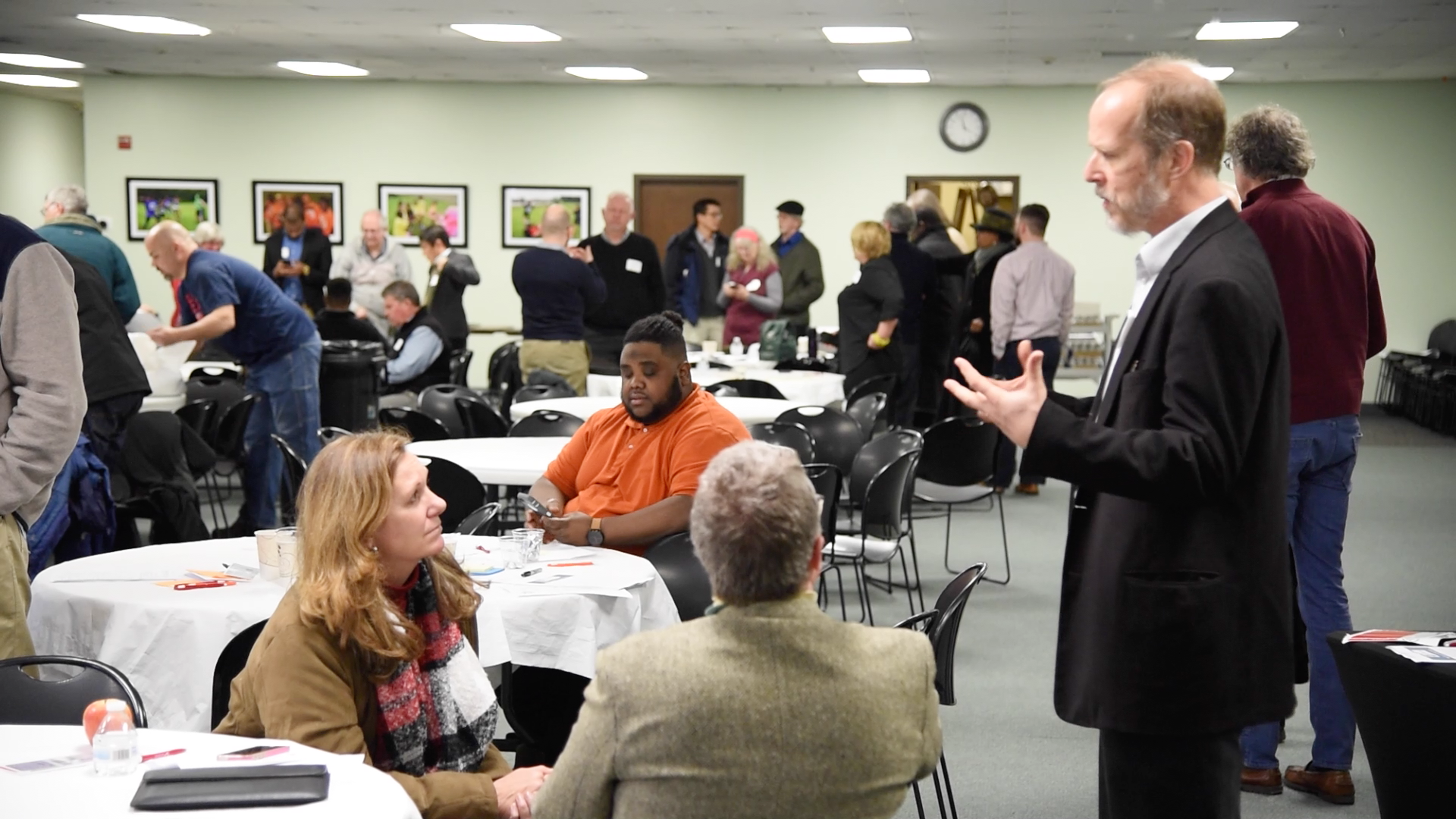










TABLE DISCUSSIONS
A key feature of the forum was table discussions, which gave participants a chance to share their perspectives, reflect with other leaders from their cities and together gain deeper insight. Each presentation concluded with questions for leaders to digest what they are hearing and how it applies to the unique ministry environment in their cities.
In the last part of the day, participants engaged in a large-group processing and sharing exercise to determine the key learnings that were emerging throughout all the cities. Through "flash hexagoning," individuals responded to the question “What have you learned today?” on sticky notes, and then shared these with their table. The table then grouped responses by common themes and chose up to three overarching key learnings to be highlighted for the entire room. Each table's key learnings were written on larger sticky notes, which were then themed on the wall by the large group. Ten key insights emerged, which we used to focus our concluding prayer time for God’s continuing gospel movement throughout New England.



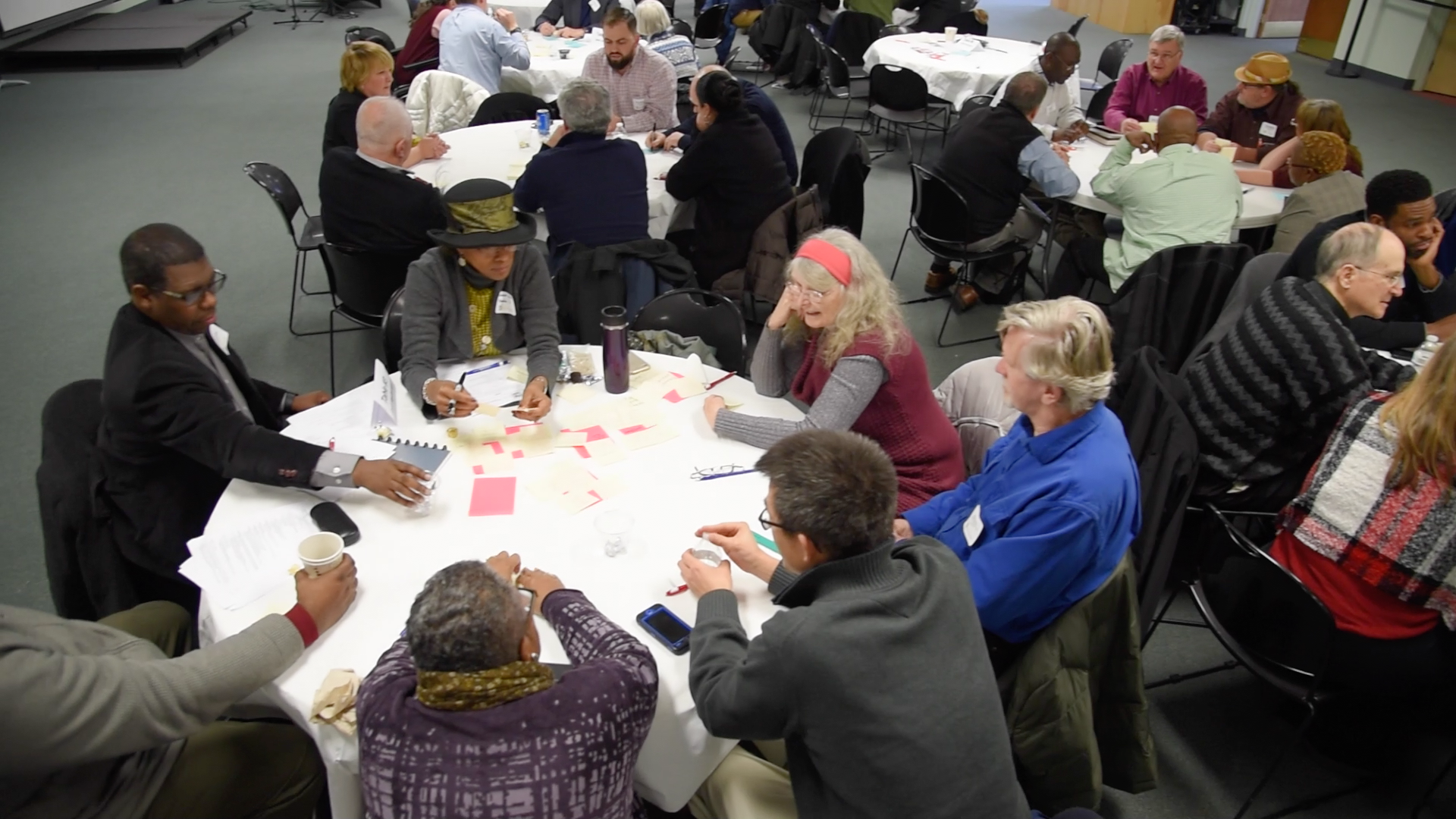



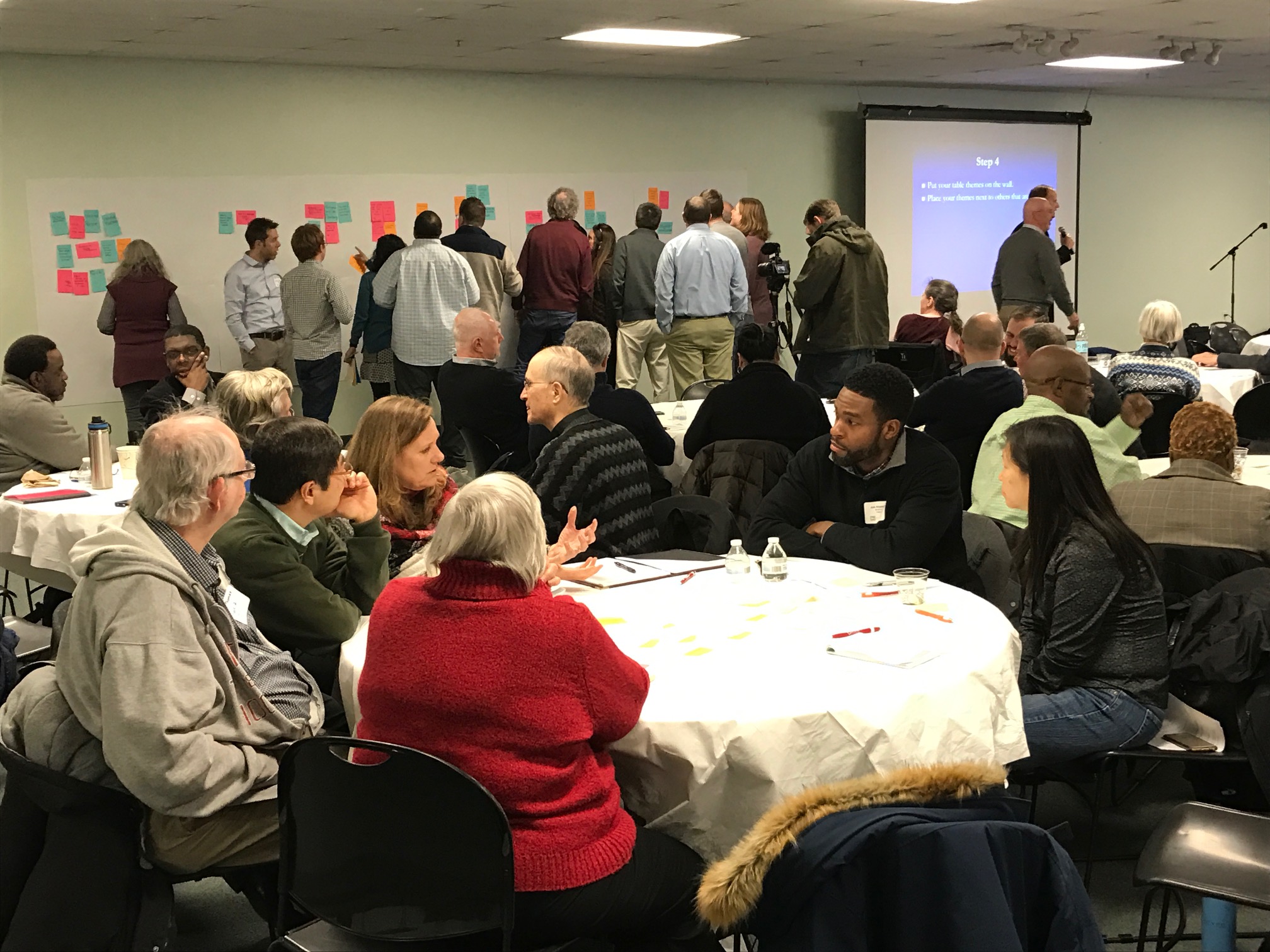
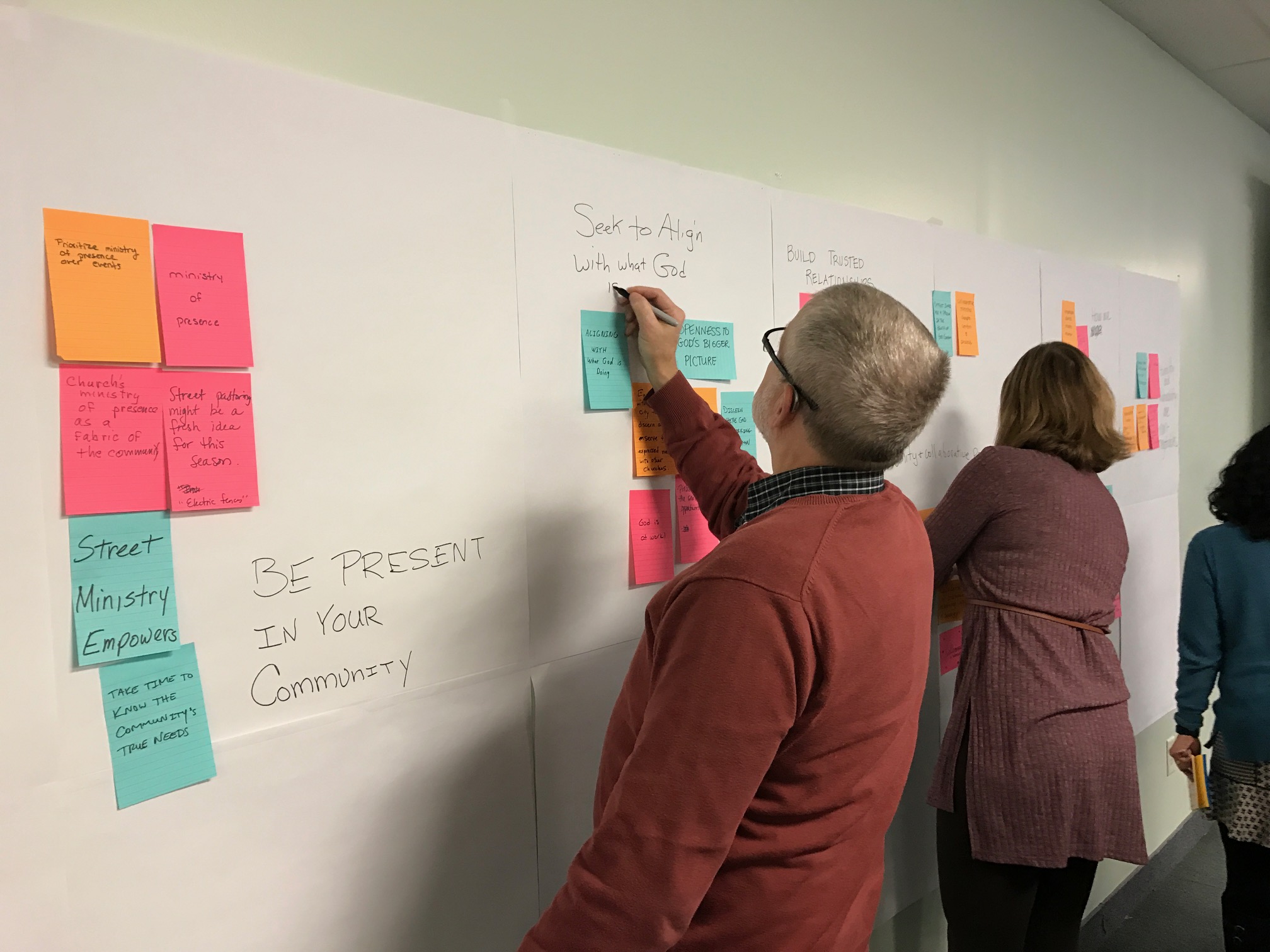
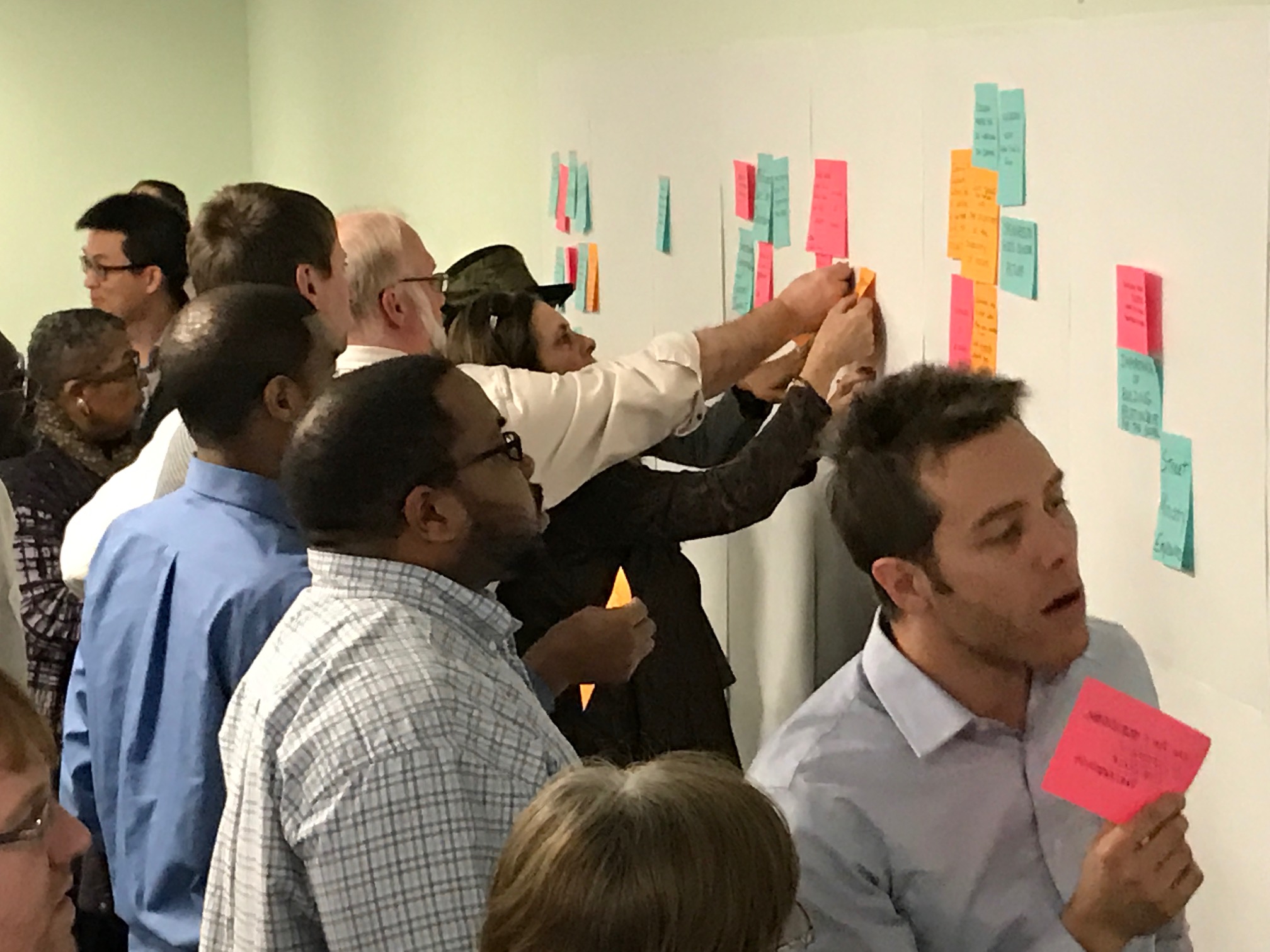
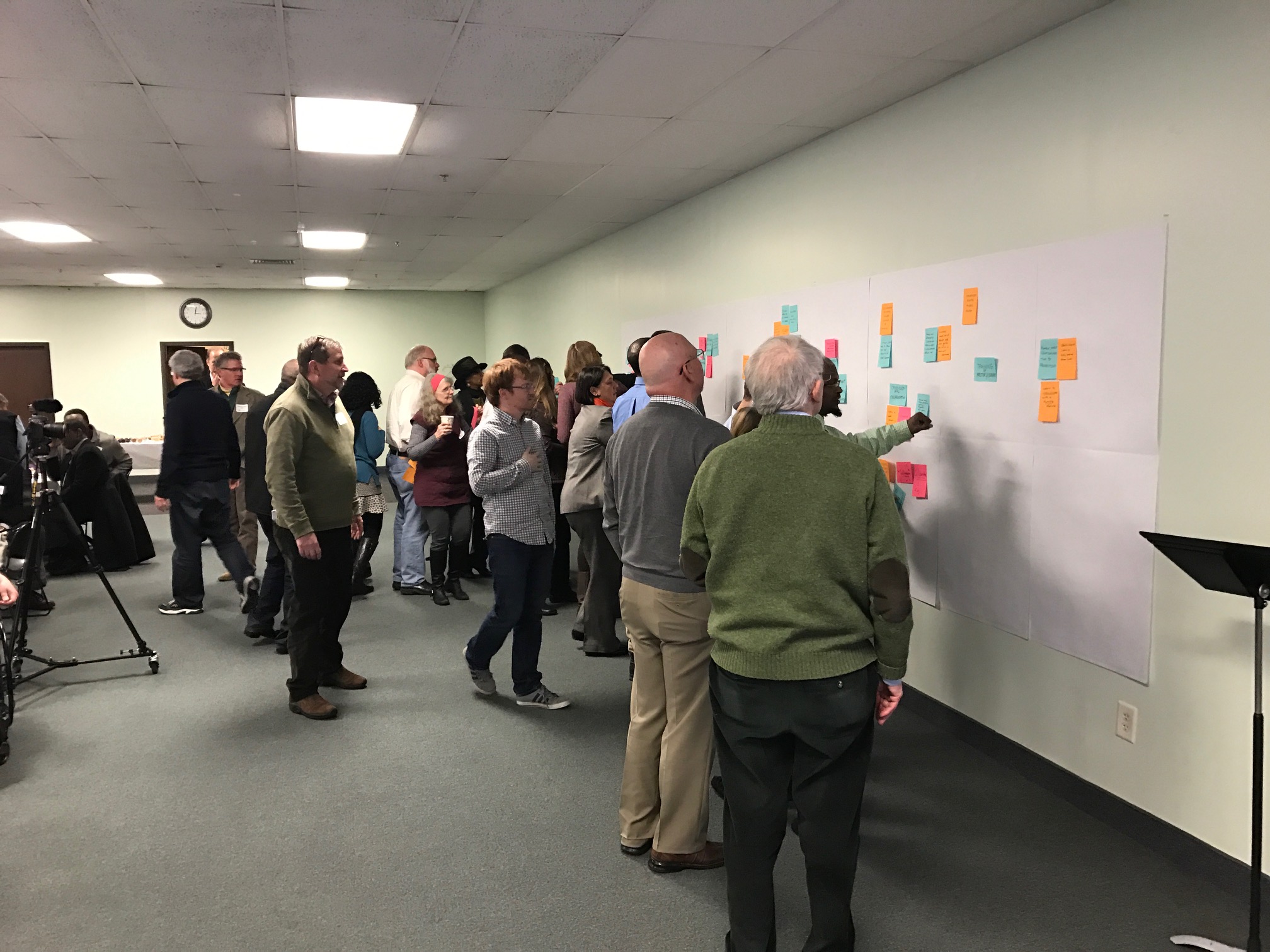
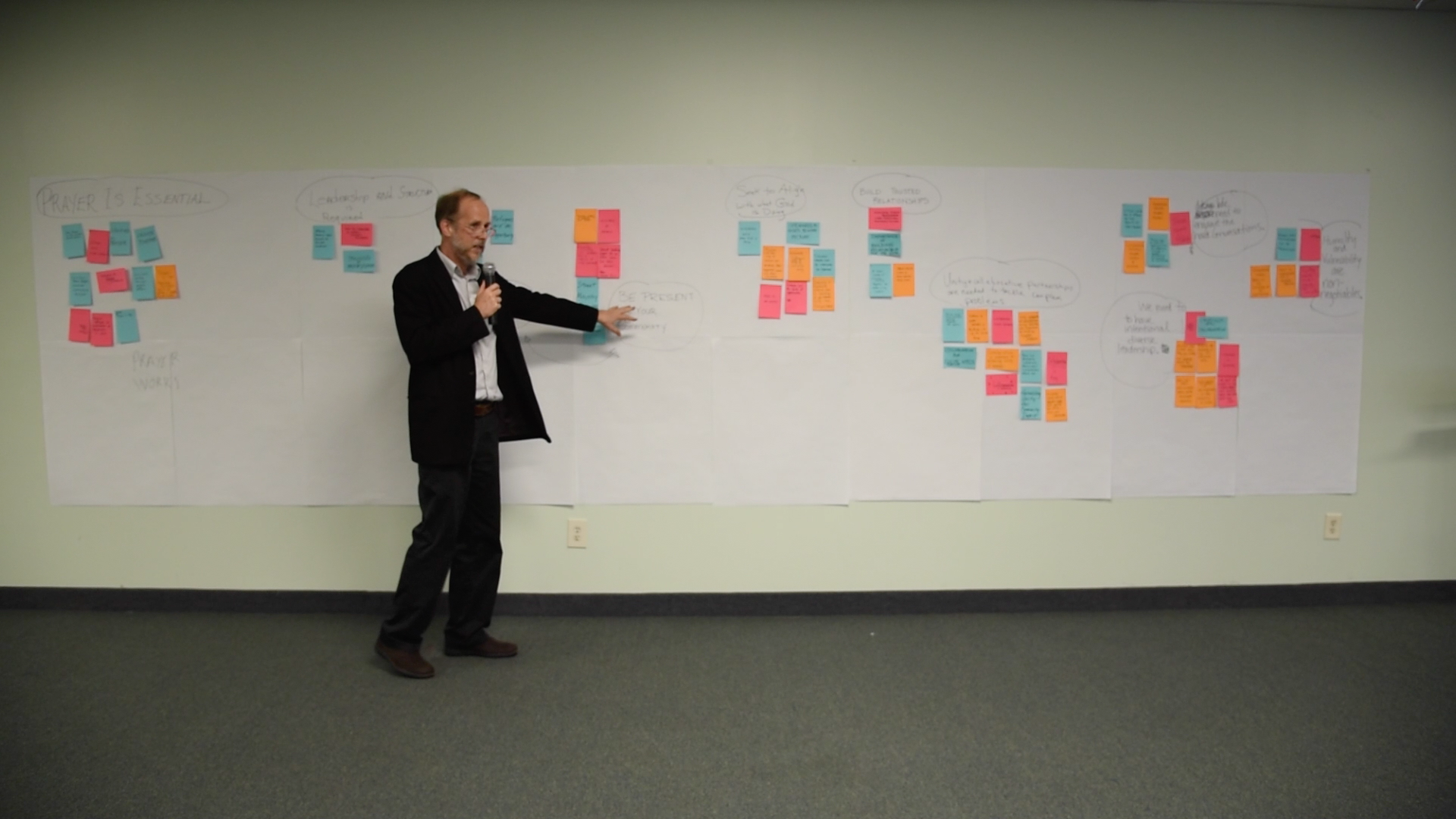
The ten key principles from the forum are stated below, with select, undergirding sticky notes in quotes and additional insights from day-long notetaking at the tables.
LARGE-GROUP LEARNINGS
1. Unified prayer is essential
Praying together is the foundation of a gospel movement, and "precedes an environment of collaboration and love." "Commnunity-based prayer launches community action." It is no surprise that many of the cities with strong Gospel witness also had a strong inter-church prayer network across denominations. Truly, we can’t expect the Holy Spirit to move in our cities without unified prayer.
2. Leadership and structure is required
"Effective moments require engaged and available leadership." "A structure is needed to capture and accelerate partnerships." Pastors are often the gate-keepers for collaboration; if they don’t know other pastors, then churches won’t work together. "Training of pastors/leaders" is key. At the same time, we need to restructure the current church system so these initiatives are not entirely placed on the pastor. There is much momentum around training congregation members working in secular fields to disciple people in their occupations to further the kingdom of God. To this end, pastors in Hartford have been discussing a Kingdom in the Workplace conference to help people network across churches vocationally.
3. Know your community
Needs within cities are ever-changing: we must become multidimensional in our thinking and approaches to serve our communities. Initiatives should be birthed through the assets and needs in the community, so that ministry is transformational rather than transactional. "Understanding demographics for Gospel impact" by tuning into the "kairos opportunities" presented by who is in or coming to a city--through immigration, refugee resettlement, etc. There is a lot of momentum throughout New England around refugee ministries, and God is bringing us an opportunity to engage the nations through the refugees among us.
4. Be present in your community
A "ministry of presence" is key, and upon this foundation events can be leveraged--we must "prioritize presence over events." Church leaders are continually seeking to find a good balance between initiating collaborative events and adopting a consistent ministry of presence-- a dynamic that plays out not just when a church engages the community, but also when churches engage each other. All of the great gospel movements are happening outside the four walls of the church. Leaders in Portland have found that the less church-centric and the more sent out into the neighbors a church can be, the better.
5. Seek to align with what God is doing
Rather than just starting new things, leaders should find things that are already happening and join in, asking “How can we be a part of this?” This curious, open, discovery-oriented approach identifies and celebrates where "God is at work," and enables us to see our ministry within God’s bigger picture.
6. Build trusted relationships
Leaders across New England continually attribute gospel movement to strong, trusting relationships between leaders. God speaks to many people at once - we can only discern what God is doing by being in relationship with one another. Developing authentic relationships that cross traditional boundaries and divisions is also key, but taking time to build trust cuts against our natural proclivity for “productivity.” However, trust-filled relationships make #7 (below) possible, and are also the basis of #8.
7. Unity and collaborative partnerships are needed to tackle complex problems
At least nine cities honed in on the importance of collaboration: collaboration is not just an optional goal for ministry, it is essential for united and effective gospel witness. Cities are complex, and churches miss major opportunities when they do not see secular/governmental organizations as potential allies, rather than obstacles. Boston has seen the incredible value of intentional partnership between churches, community organizations, and social service agencies within small geographic regions of the city. In Portland, church leaders have come together to serve the refugee population and address the drug crisis, complex situations that are too big for any one church to tackle. Leaders in Worcester describe the need for some kind of clearinghouse that brings us together and helps to coordinate our prayer, witness, and service.
8. Intentional diverse leadership is needed
Churches and ministry efforts are richer when they are diverse because more diversity equals more lenses, resulting in a clearer vision. We need to get outside our cultural and denominational bubbles in order to gain insight on our own stereotypes and biases, so we can see God and others more clearly, as well as our part in what He is doing. Pursuing diversity in any context (church, leadership, collaboration) needs to be intentional and it is not going to happen naturally. Churches in Cambridge have found that diversity is built through food, friendship, and giving voice to people at the table. Who is at the table when something starts often means that the starter group ends up being the decision-makers, so having multiple entry points where new people at the table can co-create, not just "follow," makes functional diversity more likely.
9. We need to engage hard conversations
"Comfort zones are a prison in the growth of God's Kingdom." Therefore we have to break outside of our comfort zones and pursue hard, vulnerable conversations with those who are different from us, but this isn’t easy. Working together "disrumpts comfort and process" and we need to anticipate that and press through. Our "unconscious mental models"-- how we think the world is or how it works-- really matter, and these can be challenged when we work together. Even with the best intentions, sometimes we can operate counterproductively (for example, through "toxic charity"), and our willingness to engage in hard conversations will determine whether these blindspots can be addressed. One of the biggest challenges is for churches to create collective long-term change, rather than the tendency to follow the “flavor of the month.”
10. Humility and vulnerability are non-negotiables
We must "learn to communicate with a humble posture." "Humble, honest relationships must be prioritized." Like Jesus, we must have the attitude that we came not to be served, but to serve. Our humble approach is something that should stand out about the Christian Church and as we engage one another. Looking through the lens of our own need/brokenness opens us up to better understand and come alongside others; this shifts how we reach out and understand ministry. In many cases, when partnerships are empowering the community and the local leadership so that they are leading locally, the Church may not get the immediate credit. (Good thing we have an audience of One.)
PERSONAL REFLECTIONS
Through reflecting and dreaming together, and through fellowship and prayer, a vision for growing the Kingdom of God in New England was expanded and strengthened. Here are some comments from participants:
“I was surprised that God’s work in New England is fairly common from city to city. The same “city issues” exist everywhere!”
“Today, I learned the value of accessing as many lenses to view my city as possible, and that building relationships across our differences is worth whatever it costs.”
“I learned about the need for diversity to be present in our dialogues.”
“It was inspiring to see what God is doing in our region.”
“It was cool to see how prayer and John 17 unity is resonating throughout the region.”
“The flash hexagon activity was a great way to digest the information, and made me think about the art of God’s refracted light.”
“I learned about the importance of fostering united prayer and authentic relationships with others outside of my normal silos.”
“I was encouraged to see that there are many in my city who have a heart to come together and see God do a good work!”
NEXT STEPS:
New London: Leaders in New London were encouraged by Worcester’s model of two churches collaborating to run a sober house together and are exploring implementing this in New London. They are also considering starting a free arts and crafts in the park once/week during the summer.
Rhode Island: Based on the New England City Forum conversations, leaders in Rhode Island thinking about how to rebrand their movement towards the “Together” terminology, developing a sub-area strategy using the NH Alliance as a model, and continuing to develop the 24/7 prayer network.
Connecticut: CityServeeCT is now working to invite more than 100 additional pastors to their monthly meetings and rotate the meeting location between cities.
Maine: Leaders in Maine are considering implementing a street pastor’s ministry in Lewiston and how they can respond well to immigrants in Portland.
Hartford: A pastor's luncheon is taking place on March 30th to consider how to foster greater unity and relationship among diverse leaders in the Urban Alliance Network.
Worcester: In a follow-up meeting, Worcester church leaders discussed the need for their team to represent the full racial, ethnic, gender and denominational diversity of Worcester. They are also considering how to nurture better church/community collaboration through focused research, a street pastor's ministry, and local school partnerships.
What is Living System Ministry?
What is Living System Ministry? Doug Hall sets out the core ideas of this discipline of Christian practice where we learn to discern the living social systems around us and align our actions to what really creates lasting change.
What is Living System Ministry?
Living System Ministry is a discipline of Christian practice that recognizes the differences between the living systems that God makes and the constructs that people make, offering insights and practical tools to help us align with and effectively engage living social systems.
Consider cats and toasters
People make toasters. Only God makes cats. And, clearly, we can’t fix a sick cat with the tools we may use to fix our broken toaster. So why do those of us who are in Christian ministry try to fix our churches with tools designed for accomplishing simple tasks, which don't take into account what is truly living, the rich complexity of our people-based, Spirit-filled churches?
Churches, cities, and cultures are living systems
The Bible describes the church as a body, an organism. Yet, in our Western culture, we have grown accustomed to thinking of churches in terms of organizations or buildings because our culture is very organizationally and technologically centered.
Our thinking about our social context is inadequate, so our actions are unfruitful
God is always at work and, as his children, we want to participate with him in his work. If we use our organizational mental models to work with living systems such as churches, neighborhoods, and cities, unknowingly we cause much long-term harm instead of good. We need to learn to adopt the right mental models about living systems to avoid that.
Through redemption, we can learn a better way of thinking
Through our friendship with Jesus Christ, we find that his ways are higher than ours, and, through a consistent process of redemptive thinking, we internalize his ways of growing and nurturing what is alive. More like farmers than technicians, we learn, through this redemptive process, to be involved in and “in tune with” what causes fruitfulness. We never “cause” fruit to happen! God does!
With a new perspective, we can participate with God in his work
As our work becomes aligned with what God is already doing, and as his vitality begins to flow through the veins and arteries of the living social systems, there is an explosion of life within us and around us. Multiplication of this life is the natural outcome of living system ministry. It is our joy to discover it, and to give all honor and praise to God.
Bear fruit in every good work
We learn that real change in any living system is not dependent on what we do, but on what God does. Therefore, to get anything done, we are going to have to learn to think more about working with God’s living systems and think less about trying to fix problems with our plans and procedures and programs. When our ministry activities are better aligned with what God is already doing, there is an explosion of life! Then, instead of our actions causing more decline, our actions contribute to fruitful ministry.
To learn more
These are just some of the core principles of Living System Ministry. At the Emmanuel Gospel Center, we have been teaching these concepts to seminarians and ministry practitioners for many years. To learn more, you can start by reading Doug Hall’s 2010 book, The Cat and the Toaster, Living System Ministry in a Technological Age (Amazon: https://amzn.com/1608992705). You can search this site for more on the topic of Living System Ministry. Or get in touch with us. We would be happy to help!
Summary/synopsis:
What is Living System Ministry? Doug Hall sets out the core ideas of this discipline of Christian practice where we learn to discern the living social systems around us and align our actions to what really creates lasting change.
The Process of the Gospel
The Process of the Gospel is not a program, but a model for building relationships that nurture effective, incarnational ministry, helping people experience the presence and power of Jesus Christ for themselves. By internalizing this process, Christians can be involved in loving people in some of the same ways that Jesus modeled for us in the Gospels.
The Process of the Gospel
A Relational Foundation for Doing God's Work God's Way
by Doug Hall
It is an inestimable privilege for me to “do God’s work” and to be a “fellow worker” (1 Cor 3:9) with God.[1] This high calling makes me very nervous, however, because I take doing God’s work very seriously, and I have always carried within me a deep fear of being counterproductive.
Over the years, I have come to see that this fear has been beneficial, because it has motivated me to seek God more, and has allowed me to become involved in very fruitful, multiply productive ministry.
One way of being hugely counterproductive is to do ministry in a programmatic manner. I am very convinced that ministry must not be carried out programmatically but rather through genuine relationships. The Process of the Gospel is not a program but a relational tool for doing God’s work. It creates a relational foundation for very effective ministry that will be multiply productive rather than counterproductive.
Earlier this summer, we took students from our Doctor of Ministry class on a tour of ministries in Greater Boston.[2] We picked ministries that we felt demonstrated integrity, long-term practice, fruitfulness, and cooperative participation across the Body of Christ. On our visits, I heard each ministry leader cite relationships as the most critical factor in their overall success.
Indeed, working through relationships is one of the primary ways God goes about his work. The Bible tells about one relationship after another that God established with individuals, families, cities, and nations. God’s work of redemption requires that his message be planted among us, understood by us, and that it grow and bear fruit. This all comes through relationship.
We know this is true, but I want to understand how God does it.
What actions does he use to create relationships with his fallen children?
How does he introduce, communicate, and affirm his message?
And then, how does he go about planting his message in our hearts and nurturing that message to maturity?
I believe that if we can get a handle on how God does his work, maybe we can learn to do our work in the same way. And if we learn to do things the way he does, I believe there is a stronger likelihood that our work as ministers of the Gospel will bear the fruit God desires to see.
Process of the Gospel in the Bible
Consider what Jesus did during his ministry on earth and how he communicated the Father’s message to us. In other words, what is the process he used to bring us the Gospel?
I identify six stages of the Process of the Gospel:
Observation
Positive Appreciation
Relevant Communication
Meeting Perceived Needs
Meeting Basic Needs
Multiplication
Here is what God did:
God observed his fallen creation. Our sin condemned us to death. We were eternally lost without him.
Because he knows us and loves us (positive appreciation) he sent his Son who communicated relevantly through his life, his parables, and teaching.
When Jesus walked among us, he identified and met our perceived needs with miracles, as he meets our needs today, and then he met our basic, core need through the atoning work of his death and resurrection.
Finally, he prepared his disciples for his leaving, laying the groundwork for the multiplication of his Kingdom through his church, made possible through the coming of the Holy Spirit.
These stages describe a pattern that God has designed to allow the power of redemption, working in and through living systems, to grow his Kingdom.
By definition, a living system is an orderly, highly complex, and highly interrelated arrangement of living components that work together to accomplish a high-level goal when in proper relationship to each other.[3] When people come together, living systems like families, churches, cities, and nations are formed.
Because the Process of the Gospel helps us to align with and engage God’s living systems, it can be used not only for ministry with individuals, but with larger social systems, such as a local church or an entire city.
This cycle can be repeated many times in ever-widening realms of influence, from an individual person to a neighborhood or a local community of faithful people, to the community of faith in an entire city, to many cities working together. It works in one-on-one relationships, in ministry development, in cross-cultural missions, in church planting, and in community organizing. With it, one can reach the poor and the rich. It can work in both sacred and secular settings. It can and has transformed entire cities and has allowed Christianity to grow throughout the world.
I call this six-stage pattern an archetype because these elements work together as a unit, an entire process that follows an enduring, stable pattern or model that transcends time and space across all human history.
For almost five decades through our work in Boston with the Emmanuel Gospel Center,[4] we have found countless opportunities to use this approach, and it has helped us to avoid counterproductivity while consistently producing long-lasting fruit for the Kingdom of God.
The fruit we have seen God bring during this time is not insignificant. We have been privileged to experience an incredible revival in Boston that we call the Quiet Revival. In four decades, the number of churches in Boston has nearly doubled, from approximately 300 in 1970 to 575 in 2010. Also, the estimated percentage of the city’s population in churches has increased from about 3% to about 14% and has demonstrated many of the characteristics of healthy growth, including increased unity and prayer, trained leadership, and effective ministry that produces significant social change. [5]
It is an exciting place to be at work in God’s Kingdom, and it is from this context of vibrant and sustained growth of Christianity that I write today. Let me first share with you how I stumbled across this pattern.
Discovery
The Process of the Gospel evolved out of suggestions originally intended for short-term student participants in urban ministry. To guide the students in properly relating to people in the community, I reflected on what had worked well for Judy and me in the past.
Several basic characteristics of our relationships with our neighbors surfaced over and over again and I wrote a short teaching paper to help my students navigate relationships with our urban neighbors. It eventually became evident that the relational approach we suggested to these students was the pattern Jesus had followed in his ministry. Therefore, in using it, we would be doing what Jesus did. The “Process of the Gospel” was born as I realized that what I had originally penned as “steps to short-term involvement” was really something deeper.
Because living systems are at issue, readers must resist the temptation to take the easy way out, to try to make the Process of the Gospel into a program, rather than allow it to become an integral part of who they are. Those who make it into a program will be missing the point entirely, and missing the opportunity for fruitfulness, which is the goal.
Defining “Process”
A simple definition of process would be “a series of actions directed to some end.” Although that captures the heart of it, I see it as so much more. It is important to make the distinction between process and procedure as we are not talking about a new procedure for ministry, but an age-old process.
I view procedures as isolated steps we need to do in order to complete a task in a systematic, orderly way. Process is different. The goal of process is not merely to complete some isolated task but to see transformation or change in something, to move toward a desired outcome that is much bigger than ourselves and is beyond our control.
While procedures are people-driven, processes are driven by the larger living systems we engage. For example, to grow tomatoes, we work within the rules and powerful forces that already exist in the environment, including the weather, the presence or absence of pests or diseases, the need for nutrients in the soil, and so on. We might follow certain procedures for growing tomatoes, but the actual process is very complex, and the result of all we do is really up to God.[6]
The same holds true for the Process of the Gospel. As Paul says in 1 Corinthians, “I planted the seed, Apollos watered it, but God made it grow” (1 Cor 3:6). So it is never about how well we follow the steps and do the task. Rather, it is about how well we work with the complex and interrelated processes God has already put in place. He is the Author of all life and the Lord of all living systems. In the end, he will get all the glory for all he has done.
Stage One: OBSERVATION
I love the city. I love to be in an inner-city neighborhood with all the people sitting on their stoops, the children in the playground, the youth playing baseball, the neighborhoods that seem filled with baby carriages, poor people, or elderly folk. My city has a pulse, and I feel it beating.
The highest levels of observation are required to perceive social systems, large or small, as living realities. When we are able to do this, we do not simply see streets and buildings, but a complex social organism called Boston, Philadelphia, or New York, for example.
The Old Testament prophets addressed entire cities and countries as though they had the characteristics of a living person. New Testament writers wrote to cities as though each city, represented by its one church, were persons who could receive a letter.[7] They understood the “body of Christ” and the “Kingdom of God” as living systems.
God himself models this skill of observation for us. Moses wrote, “God looked on the Israelites and was concerned about them” (Exod 2:25). God’s compassionate observation of the children of Israel in slavery under Pharaoh moved him to action.
“Observation is a humble skill. Anyone can do it. No college degrees are needed. But it challenges the greatest intellect to assimilate and make sense of what one sees.”
God's observation is very thorough. Is there anything about us he does not see? The writer of Hebrews says no. “Nothing in all creation is hidden from God’s sight. Everything is uncovered and laid bare before the eyes of him to whom we must give account” (Heb 4:13). He knows every intimate detail about us. “And even the very hairs of your head are all numbered” (Matt 10:30). He knows what we are thinking now and what we are going to think later. “Before a word is on my tongue you, Lord, know it completely” (Psalm 139:4).
After Jesus was born in Bethlehem, a full thirty years went by before he began his ministry. What was he doing for thirty years? We know little about those days, but we can be sure he was observing and learning about the people who lived in Nazareth and the surrounding region. Most of Jesus’ earthly life was lived in the critical observation stage, through which his Father was preparing him for the day when he would begin to proclaim the Kingdom of God.
Observation is a humble skill. Anyone can do it. No college degrees are needed. But it challenges the greatest intellect to assimilate and make sense of what one sees. We study the situation. We try to see real people in the way they really operate. We pray, “Lord, give us eyes to see!” And here, of course, we are not merely asking for physical eyes but for deep insights, revelations, intuitive understanding, and subconscious vision.
Since the mid-1970s, the Emmanuel Gospel Center has had a full-time researcher on staff. Over these many years, Rudy Mitchell has gathered information on Boston’s neighborhoods and churches to help us see and understand what God is doing in our city. Not only has our research informed our own ministry decisions, but we share what we learn with others to help them make wise decisions about their ministry objectives.
Today, a lot of our research incorporates team learning. By engaging others in the learning process, we work with the community to deepen everyone’s understanding of the issues, obtain new information, clearly articulate the issues, and assist those affected to develop and implement an appropriate response.[8]
The conversations that emerge from this observation and research process lead everyone involved to deeper understandings and positive appreciation of the people and issues involved. This paves the way for practical responses that make sense both to those seeking to serve and those being served.
No matter where you find yourself in ministry, become a learner. Humble yourself to be open to what God will teach you as you look around. We do not start by doing. We start by observing. Take the time to do the research.
The deep understanding we gain from keen observation will naturally flow into the next stage of the Process of the Gospel, a positive appreciation of the people around us and their unique environment.
Stage Two: POSITIVE APPRECIATION
The second stage, positive appreciation, means making room in our hearts to respect honestly and actively and care about people and their potentially foreign cultural context.
There is a marked difference between respecting people for who they are and helping people merely because they have needs. In fact, if you jump in to help people because they have needs, without respecting and loving them first, you may be accomplishing nothing at all. Is that not what the Apostle Paul meant when he wrote, “If I give all I possess to the poor and surrender my body to the flames, but have not love, I gain nothing” (1 Cor 13:3)?
If our relationship with someone is not based on affection that emerges from esteem, but is only built on our ability to give some service or thing to the receiver, there is danger that the relationship is paternalistic and dehumanizing. That kind of relationship produces short-term results or dependency or both, but not spiritual fruit.
So, the rule of thumb is this: until you can first honestly appreciate people, do not try to reach them with your message or your acts of service.
Our model for positive appreciation is God himself. God’s unthinkably huge sacrifice, the selfless death of Jesus on our behalf, flows from his perfect love for us. Jesus expressed immense positive appreciation of people. He wept over them as “sheep without a shepherd” (Matt 9:36). John said of the Cross, “Having loved his own, he showed them the full extent of his love” (John 13:1).
The person or group we want to engage may not be willing to engage, either because of fear, hostility, ignorance, brokenness, lack of self esteem, or some other obstacle. Positive appreciation is not necessarily reciprocal at this point, nor does it need to be. Jesus loved us and died for us while we were yet sinners (1 John 4:19). His giving did not depend on our positive response to him.
If we really care about people, they will sense that, and even when we make mistakes—for we will make them—they will forgive us because they know we care about them. We will offend and be offended; we will misunderstand; we will act defensively, prejudicially, or chauvinistically. But most people will eventually forgive us if they know we have a genuine love for them. As the Apostle Peter says, “Above all, love each other deeply, because love covers over a multitude of sins” (1 Peter 4:8).
Positive appreciation may not come easily. But the more we practice it, the more it is going to be perfected in us, though there will always be a huge gap between the way God loves and the way we love. This gap is a reality, not a problem. This is what the fallen world is about.
As we walk through the stages of the Process of the Gospel, we must always keep in mind that we are in a redemptive process, we are always confessing sin and always submitting to God, who will show us what to do.
Stage Three: RELEVANT COMMUNICATION
I think the real goal of relevant communication is congruence—that what you think you are saying is what the other person is actually understanding you to be saying; and that what you are hearing is what the other person is really intending for you to hear.
Relevant communication creates a deep connection between people. Your words will connect first to the matter at hand, but also to the heart of the listener. What you say will be practical and applicable. Your listener will have a sense of inner satisfaction that he or she is being heard, because what you say is congruent with their needs, their interests, their requests, and their worldview. At the same time, we carefully listen, hear, and receive from them.
God communicates through his “Word,” Jesus Christ. The writer of Hebrews makes this point clearly: “In the past God spoke to our ancestors through the prophets at many times and in various ways, but in these last days he has spoken to us by his Son” (Heb 1:1-2). God spoke all of creation into being, and Job says, “God’s voice thunders” (Job 37:5a). When God spoke to Elijah, however, he spoke in a “still small voice” (1 Kings 19:12). Our God is a God who speaks! And he is also a God who hears our cry, who is closer than a brother, whose Spirit intercedes and groans inexpressible words within us (Rom 8:26,27).
From the beginning of our time in Boston, we would often have people living with us, whether they were people from the streets, ministry students, or fellow workers. The street people who lived with us taught us to be clear in what we said, because they were looking for honest love, and if we said something we did not mean from our hearts, they would pick it up immediately.
They were our textbooks on developing integrity and transparency. If we said we would do something we really did not plan to do, we would see their hopes crushed, and distrust would creep back into their eyes. Many of the people we met had been injured in multiple ways, and trust was not easy for them.
Relevant communication goes beyond words. It goes into the depths of who we really are and how we are communicating who we are. Communication also involves nonverbal cues such as hand gestures and a listening posture. Relevant communication means knowing what people are saying and, to a degree, what they are thinking, and then carefully using stories and other ways to communicate clearly.
Are we listening well enough so that what we hear is really what people are intending to say? Are we speaking carefully, so that what we are saying is really what we intend to say, and our listeners are hearing what we intend them to hear?
Stage Four: MEETING PERCEIVED NEEDS
The Gospels are full of stories about Jesus meeting the perceived needs of the people around him.
You know the story of blind Bartimaeus. When at last he stood before Jesus, the Lord did something very unexpected. He looked at him and asked what seemed to be an odd question: “What do you want me to do for you?” The man was obviously blind! But it was important for Bartimaeus to verbalize his own perceived need. Jesus waited for relevant communication that revealed the man’s own perceived need before he took action.
Bartimaeus was very clear about what he wanted. “Rabbi, I want to see,” he said.
“Go,” said Jesus, “your faith has healed you.” Immediately he received his sight and followed Jesus along the road” (Mark 10:46-52).
Jesus came to provide the answer for our most basic need, that we would be redeemed from sin and death, but on his three-year journey to the Cross he responded to many, many perceived needs that people were concerned about. The Gospel is not only what Jesus said, it is what he did.
God has created us to help others. Paul says, “For we are God’s handiwork, created in Christ Jesus to do good works, which God prepared in advance for us to do” (Eph 2:10).
Why does Paul say we are created to do good works? Surely it is not to earn our place in heaven. That work has been accomplished on the Cross. Jesus said, “Let your light shine before others, that they may see your good deeds and glorify your Father in heaven” (Matt 5:16).
In a very real way, our good deeds, prompted by love, are the Gospel message, without words. We do the Gospel. At the same time, of course, we preach the Gospel using words. God has given us his special revelation, and he wants everyone to hear and know what he has to say to us.
The point is, we want the way we live to speak as loudly as our words. Meeting felt needs is an important step, because it is incarnational ministry. For the recipient, it is spiritual reality experienced through practicality.
“Suppose a brother or a sister is without clothes and daily food. If one of you says to them, ‘Go in peace; keep warm and well fed,’ but does nothing about their physical needs, what good is it? In the same way, faith by itself, if it is not accompanied by action, is dead” (James 2:15). James makes it clear that our words are not enough, and actions, including helping to meet perceived needs, spring from faith.
Those of us in ministry are always faced with the immensity of human need all around us. There is no escape from the press of need, and knowing that Jesus is the answer to all our problems, we want to help in his name.
When Judy and I first came to Boston, we felt our lives were coming apart because of the craziness of trying to respond to the needs around us. Judy clearly remembers how busy we would be meeting the needs of just one person: taking her to the outpatient clinic, to the grocery store, to the social security office, to apply for food stamps and fuel assistance, to the welfare office, typing up forms and applications for her, and helping her deal with her addiction and relational problems. And that was just one of scores of people at our door every day of the week.
Here are a few things we learned along the way:
1. Be realistic.
After carefully listening to what the person or group say they need, it is best to choose a need that can actually be met. For especially those people who have lost hope many times, we cannot afford to make promises we cannot keep.
Choose something you have every reason to believe you may be able to accomplish with and through their participation, and then pull out all the stops to make sure it happens.
2. Be collaborative.
Make room for the person or group to fully participate in meeting the need. This should not be a giveaway program. Their participation in the process will build their confidence and ownership of the solution.
Change must come from within, not from without. It is through helping to address a felt need that hope is built in people, and that hope will help them begin to surface their more basic, core needs.
Stage Five: MEETING BASIC NEEDS
When we move from meeting perceived needs to meeting basic needs, you may think that this is no big deal—that we just go from a focus on surface needs to deeper needs. But in reality, a seismic shift takes place as we move between these two.
If you miss the importance of this transition, you will miss the power that comes from the Process of the Gospel. Your ministry may very well stay on the surface, and you may not see the abundant life you want to see take root and grow in the life of your friend.
Here is the best way to tell the difference. Perceived needs are identified by tangible solutions where the meeting of the need is finite. The solution does not internally transform the person, though it certainly brings a measure of hope and relief. The change is additive.
But on the other hand, you know basic needs are met when the solution brings an ever-widening range of other needs also being met simultaneously and spontaneously. There is an explosion of life as one door after another opens in the person’s life. The change is multiplicative.
When, for example, a long-term alcoholic becomes sober, a whole series of needs begins to be met at the same time. These may be physical needs, employment, family issues, a sense of self-worth and value, and gaining a purposeful life.
In meeting basic needs, the transaction is between God and the individual, and unless the individual participates with God in his or her restoration through willingness, obedience, and depending on God, nothing of any lasting significance happens.
We cannot force this. We cannot make it happen. God must do the heavy lifting. “Unless the Lord builds the house, the builders labor in vain,” Solomon wrote (Psalm 127:1). My role is to support and nurture the individual, and make sure he or she is connecting to the broader body of Christ as God is at work doing things I cannot do, and as he brings redemption and restoration.
The basic need is only fully met when my new believer friend is nurtured within a new family of supportive believers that is part of the larger extended family of the body of Christ. Nurturing these family relationships is a good way to “engage God’s living systems” and is the heart of Living System Ministry.
There are some basic needs common to all humankind that have arisen because of the Fall, such as sinfulness, our fallen human nature, separation from God, and rebellion against him. Paul puts this matter very strongly. “Once you were alienated from God and were enemies in your minds because of your evil behavior” (Col 1:21). Our most universal, core spiritual need, then, is for reconciliation with our Creator and the subsequent transformation of our sin nature.
We might think that the end goal of the Process of the Gospel is to see someone come to faith in Christ. But there is one more step beyond that. The sixth stage of the Process of the Gospel is multiplication.
Stage Six: MULTIPLICATION
Living systems thrive on their own as they receive the sustenance they need.
Judy remembers that when our baby daughter was just two months old, a friend said to her, “Rebecca seems to be thriving!” Judy was beaming, very proud to be a new, successfully nursing mother. “And you probably did not have a thing to do with it!” he concluded, with a laugh.
This took the wind out of her sails, until she realized our friend was really saying that our daughter was experiencing the natural tendency of living things to thrive when they receive normal care and sustenance. Naturally, there came a time when Rebecca moved out to be on her own and a time when our son, Ken, left home to start a family of his own.
This is a normal part of nurturing a living system. We expect to release maturing systems to grow apart from us. Multiplication in an organic system requires that we let go.
Must I empty myself of short-term goals and focus on long-term goals? Must I release the future into the hands of other people when it is easier to organize and do it myself with my group in my way? These things are hard to do but they are necessary. We must empty ourselves of the short-term goals and individualism, both of which will hinder multiplication.
In multiplication, we want to envision those we have walked beside to do the “greater things” that Jesus talks about in John 14. “Very truly I tell you, whoever believes in me will do the works I have been doing, and they will do even greater things than these, because I am going to the Father” (John 14:12).
A goal in this is leaving in such a way that life flows from the people that we are working with, so they start reaching people we could never reach. Then we have been a part of a birthing process. We want to make disciples who will make disciples.
As we follow the Process of the Gospel, we will, indeed, participate with God in the way he builds his Kingdom. We experience what it means to be a co-laborer with God!
Completing the Circle
We started out wondering how God goes about creating relationships with us, planting the message of the Gospel in our hearts and nurturing it to fruitfulness. Now, as we have come full circle, the effective engagement we sought for is complete. “The fruit that remains” is the goal, and multiplication is the fruit. The recipient now becomes the giver.
The point of Jesus’ death and resurrection was to redeem a lost people who will then actually and zealously join him in his work. This is the Gospel: “Who gave himself for us, that he might redeem us from all iniquity, and purify unto himself a peculiar people, zealous of good works” (Titus 2:14). Yet, even now, multiplication points us back to where we started.
Because the Gospel is alive, this living cycle of redemption starts up again in ever-widening circles.
From multiplication to system-wide balance
The Process of the Gospel restores relational balance to society. Rather than drawing from flawed or self-serving institutions which rely on technological, financial, intellectual, or organizational capital, the Process of the Gospel both draws from and builds up what I call “relational capital.”
While the Process of the Gospel effectively meets real human needs on every level, this process is not needs-based, but asset-driven,[9] because
it works out from a positive appreciation of everyone involved
liberally uses the assets that flow from healthy living systems
throughout the process, develops reservoirs of internal relational capital that nurture the growth and development of living systems
This article was previously published in Missio Dei: A Journal of Missional Theology and Praxis 3, no. 2 (August 2012).
REFERENCES
[1] Scripture quotations in this paper, unless otherwise indicated, are taken from the HOLY BIBLE, NEW INTERNATIONAL VERSION®. Copyright © 1973, 1978, 1984 Biblica. Used by permission of Zondervan. All rights reserved.
[2] This course is offered through Gordon-Conwell Theological Seminary: http://www.gordonconwell.edu/doctor-ministry/Urban-Ministry.cfm
[3] We introduce the idea of living system ministry in our book, The Cat and the Toaster. Hall, Douglas, Judy Hall, and Steve Daman. The Cat and the Toaster: Living System Ministry in a Technological Age. Eugene, OR: Wipf & Stock, 2010.
[4] For more on the Emmanuel Gospel Center (EGC), visit www.egc.org. Judy and I started serving at EGC in 1964.
[5] Based on analysis of data gathered by the Emmanuel Gospel Center, Boston.
[6] Isaiah 26:12 says, “Lord, you establish peace for us; all that we have accomplished you have done for us.” (italics mine)
[7] For example, see 1 Co 1:2, “To the church of God in Corinth…”; Eph 1:1, “To the saints in Ephesus…”; Gal 3:1, “You foolish Galatians!” (here referring to a group identified by a geographical region).
[8] Learn more about EGC’s applied research
[9] For more on asset-based community development as compared to needs-based efforts, see, for example, the Asset-Based Community Development Institute. http://www.abcdinstitute.org/
Intro to Hexagoning: Groups Listening to Their Own Social System
Sometimes a group may be grappling with an issue, and they need to be able to “see” their issue in a clearer way. A facilitated brainstorming technique called hexagoning can help achieve that.
Intro to Hexagoning: Groups Listening to Their Own Social System
by Doug and Judy Hall
Sometimes a group of people who are grappling with an issue that is relevant to all of them need to be able to “see” their issue in a clearer way, to hear their own system speak. Judy and I often use a facilitated group brainstorming technique called hexagoning to help achieve that. The process is called hexagoning because one of the primary tools used in the exercise is hexagon-shaped.
Hexagoning: a facilitated open mapping process used to develop the conscious thought process of a group to understand complex systems, to create shared vision, and to identify systemically derived and thus aligned action plans.
Briefly, hexagoning involves evoking all the variables everyone can think of around the topic or issue at hand. There are always many, many variables that people can think of, usually at least 40. One group had 300! The more variables, the better picture they get of the interrelated complexities of the issue.
But the multiplicity of variables soon becomes overwhelming to the group. To address this complexity we have the group put the variables into categories so they can better deal with them. As each category is named in a way that reminds the group of all the variables it contains, and written on a board for all to see, the group soon has a pretty good visual picture of the larger issue it is addressing.
We find that usually this shared vision has been invisible to the group before this exercise, or if not entirely invisible, it has never been well defined. This process brings it out where all can see it.
This group is using large, rectangular Post-It Notes to accomplish the same thing.
At the Emmanuel Gospel Center, we have done hexagoning sessions at least a hundred times with many different kinds of groups in different cultures, in both urban and suburban settings, in large and small churches, with community groups and leadership teams, with gatherings of people interested in a common goal, and on a wide variety of topics. It seems to work effectively with all groups, and serves to surface ideas that are aligned with living systems.
I will take a few pages just to introduce you to the process. If you are interested in using it in your setting, you will be able to learn more at our website or from other sources.
What’s the question?
The first step in the hexagoning exercise is to come up with the one key question that you plan to present to the group.
If, for example, you have been asked to help a church leadership team clarify their goals for neighborhood outreach, you would meet with some of the church leaders to try to understand the problem from their perspective and draft the question. You might suggest a question such as, “What are the greatest felt needs in our neighborhood?”, and allow the leadership team to help refine the question to best elicit the kinds of responses that will help reveal what the group collectively thinks.
Some questions I have seen used in the past are:
What are the really good things about this ministry that we don’t want to lose?
What can be done to produce racial reconciliation among Christians? (The group was also asked to respond to this: What are the hindrances to producing racial reconciliation among Christians?)
How can we work together as a team? (The group could also respond to: What hinders teamwork in our organization?)
What would an ideal youth ministry look like here at First Congregational Church? (This question was first asked of the church leadership, and, at a later session, of the youth themselves.)
Initial large group hexagoning process
Next, meet with the entire group in a comfortable setting, perhaps around tables, and where everyone can see a white board. Write the question down where all can see it.
Give time for everyone to respond, first by insisting that each person, working on his or her own, write down three responses to the question on paper. Once everyone has had time to write, then start to go around the group, letting each person verbally give just one answer.
The secretary or scribe for the exercise will write each response in a summary or headline form on a single hexagon. Hexagons are available in a magnetic form suitable for dry erase markers and adhering to a magnetic white board, or in a Post-it® note format which you can write on with a marker and adhere to the wall or chalkboard. The designated secretary will put a consecutive identifying number at the top of one of the points of the hexagon, and place it on the board or wall.
If the group is processing both negative and positive answers, keep those separate from each other, putting all the positive responses in one place and the negative in another.
Depending on the size of your group—and we find this works with groups from ten to sixty people—go around more than once, possibly three times, so that everyone speaks several times. This method helps to encourage those who might not offer answers in an unstructured discussion due to shyness.
After everyone has shared, ask if anything is missing. Give suggestions. When everyone is satisfied, the next step is to organize the responses.
Group the hexagons into categories
The facilitator leads the group in putting all the answers into categories. Ask participants to call out which numbered hexagons are related. Someone will say, “Number 3, mutual respect, is like number 35, respecting differences.”
The secretary or facilitator will move those two hexagons together so that one side from each is touching. Continue the process of combining similar thoughts and ideas until there are four to eight clear groups or clusters of hexagons.
Next, ask the participants to name the clusters. The name should be a short action phrase with a verb that describes the dynamic of all the items in that cluster, not just a topic heading.
For example, a cluster might be called “Holding boundaries,” or “Being flexible,” or “Celebrate interracial reconciliation,” or “Unwillingness to move out of our comfort zone.” Circle the clusters and write the label directly on the whiteboard.
When everyone is satisfied with the results, then make new hexagons with the names of the clusters, and move those to a clean space.
Interrelate the clusters; infer causation
Ask the group, “From these new hexagons, what comes first? What causes or leads to what?” Move the hexagon categories around as people explore the causal connections.
When the group is fairly sure of the connections, draw arrows on the board showing what causes what, how the categories interconnect in their causal interactions. Look for causes, not logical connections. You may have more than one arrow coming out of or pointing to a category, as relationships are complex.
What you now have is the beginning of a causal loop diagram. The causal loop diagram will provide an entry point for where to begin to take action. If you start at the right place, one event causes the development of the next.
Meet with your learning team
Take the results of this exercise back to the learning team. Verbalize the “story” as represented by the arrows in your initial interrelated diagram. Adjust the relationships until every point in the loop contributes to a coherent story.
The whole interrelated diagram should make sense overall. If there is anything that seems to be left out, feel free to add additional cluster names to make sense of the story.
The next step we take is to identify and number the loops and determine which ones are “balancing loops” and which are “reinforcing loops.” Explaining these is beyond the scope of this post. But this is a process to determine how the causal momentum moves around the diagram.
Then we isolate the key topics, generally the ones with the most arrows coming in or out of them or which appear to be leverage points. We limit the variables in the final loop to seven or fewer.
FINAL OBSERVATIONS
The learning team may then explore biblical parallels to our narrative of the interrelationships, and write this up.
We then describe the practical implications of what we have learned thus far.
We report back to the initial group for feedback.
If done well, this total process produces social revelation showing how the social system itself operates to get a task done.
Indeed there is much more to this process, but hopefully you get the idea. Over time, the learning team can reduce all this learning into its simplest form so that it can be remembered and applied by everyone in the system.
LEARN MORE
Spiritual, Social and Systemic Conversion
Christians need to change. Sometimes that change is so radical, we could call it conversion. But how can those who have been converted be converted all over again? Here, Dr. Hall talks about three types of conversion, a spiritual, social, and systemic conversion. Using examples from his own life, he explains how each type of transformation was needed for him to do ministry effectively, and all three types of change were empowered by the redemption won by Jesus Christ on the cross.
Christians need to change. Sometimes that change is so radical, we could call it conversion. But how can those who have been converted be converted all over again? Here, Dr. Hall talks about three types of conversion, a spiritual, social, and systemic conversion. Using examples from his own life, he explains how each type of transformation was needed for him to do ministry effectively, and all three types of change were empowered by the redemption won by Jesus Christ on the cross.
by Dr. Doug Hall
September, 2009
Do the converted need conversion?
In the message to the Laodiceans in Revelation 3, it seems as though Christ is encouraging people who were already Christians to be converted! He is preaching redemption to the redeemed. Why would Jesus ask Christians to repent in such strong language? Why would he ask those he declares to be poor to “buy” something from him? And why would he tell Christians he is outside some door knocking to come in? This text is full of mystery!
I have just recently realized that I have had a wrong premise in writing this book. I kept asking myself, “How can the reader apply the material in this book?” And I have been expecting that the readers would first gain an intellectual grasp of the concepts and then apply that understanding to their life experiences.
But just the other day, a good friend, Dr. Bobby Bose, reminded me that it didn’t work that way for me. I didn’t begin my journey into living system ministry with intellectual understanding, so why should I expect you to find that as your entry point to a new level of ministry?
Then Bobby asked me, “How did you get converted to the way you do things?” What an interesting way to put it. As we talked, I realized that for me it really took a conversion experience, and I think this may be what is needed for you as well.
In the first few verses of his letter to Laodicea, Jesus calls the Laodicean Christians “poor, blind and miserable,” as though they had a need of redemption and needed to be saved. Next, he counsels them to buy gold, white clothes, and eye salve, symbolizing confession, forgiveness, and new life, also redemptive concepts. It sounds like he is saying that these saved people need redemption! Then he asks them to repent. Soon he is knocking outside the door of the Christian. Why is Christ outside the door of the believer’s heart? You would think this text would be about the unbeliever.
The fact that this seems to be a contradiction shows us that we are not conditioned to understand this text with the way we usually think about things as Western Christians. If we did understand it properly, not only would the seeming contradictions disappear, but also we would discover a different, higher level of understanding of God’s truth.
I think Christ is saying that although the Laodicean believers were converted and already redeemed, they needed to experience a fuller understanding of conversion and redemption. We are like that too. We have experienced one level of redemption, but there are other aspects that we have not experienced. I think Jesus is calling us to convert to full redemption.
As I talked with Bobby about how I had been converted to the way I do ministry, I thought about “three types” of conversion, and it seemed to me that I had undergone each one in some strategic experiences in my own life. Perhaps Jesus is calling us all to three conversions—a spiritual, social, and systemic conversion. Our initial spiritual conversion can give us some insight into how the other areas work.
I first experienced a vertical, spiritual conversion when I became a believer, a follower of Christ. Christians are familiar with spiritual conversion: a bending of our will to God, a calling out to him in repentance for forgiveness and cleansing from sin through a substitutionary atonement, and an acknowledgment that we want to begin walking through life with him.
Later, following my spiritual conversion, I needed and experienced a cultural (or perhaps I could call this a “social”) conversion from the limitations of my own culture to a love for other cultures. In this conversion, I found myself hungry to know about how the Gospel is expressed in other cultures.
A cultural or social conversion
We tend to get spiritual things and cultural things confused. This was true for me. Before I was a Christian, I was a Michigan Norwegian Lutheran. I believe that one of the reasons I was initially hindered from experiencing a real spiritual conversion as a young person was that I had confused what my actual faith was about with what my culture was telling me my faith should be. I finally realized that my culture reflected some things about my faith, but not enough for me to truly have a spiritual conversion. In time, I learned to parse the difference between what was my faith and what was my cultural expression of my faith. This gave me a hunger to discover how other cultures express the same biblical faith.
When I finally found the reality of my faith apart from my culture, and began to see new facets of Christianity expressed in other cultures, I wanted to learn more. I wanted to see the faith reflected in as many cultures as possible, with the belief that each culture could give me another important focus that I had not seen in my original culture. So, as an extension or continuation of my spiritual conversion experience, I also had a social conversion which caused me to see how different cultures were helpful in understanding my faith. No single culture was adequate to tell me all I needed to know about Christ. My own early experience was not in a first-generation immigrant, storefront church, but such churches taught me much about the spontaneous expansion of the faith that was possible in an urban environment. I am not Pentecostal, but Pentecostal Christian friends have taught me how to do my Christianity in a vital and fruitful way. I am not part of a holy order of some liturgical church, but many people who are in such orders have taught me how to see the poor as Jesus himself, how, as he explained it, when I do something for the least of these, I have done it to him. They teach me to see in new ways, to see that people are not to be seen as categorically poor, or addicts, or street people, but as Jesus himself.
This social conversion empties me of paternalism in ministry. I learned to maintain my own cultural identity but develop the ability to have a Process of the Gospel experience where I relevantly communicate and participate with people of other cultures in the meeting of their perceived and basic needs.
The list of other cultural groups who ministered to me and showed me a new way of looking at my faith can go on and on. Today, EGC interrelates with over 100 denominations and over 100 ethnic groups, and people who worship Jesus in 600 churches around Boston in 30 different languages. The Quiet Revival was an invisible movement of God, until we became socially converted to see it with the eyes of faith, and eventually identified it so we could talk about it and show it to others.
Yet, when I talk about cultural or social conversion, I think it will resonate with you because you have already experienced a conversion in the spiritual realm. Those of us in modern society need more than a spiritual conversion, the one that takes us to heaven. Because God’s redemptive design includes people who are not like us, people from every nation, language and tribe, we may need to be converted to the social aspect of God’s redemption.
A systemic conversion
In the course of my early ministry in the city, Judy and I began to experience a third type of conversion, a systemic conversion. A systemic conversion takes me beyond my personal spiritual redemption experience to learning how God’s redemption also extends to other aspects of life as well. On a micro scale, this means that Jesus is able through his redemptive power to supply healing of people’s bodies. On a macro scale, this means Jesus is able through his redemptive power to heal neighborhoods, communities, cities, and other large social systems. As Christ overcame sin through his victorious and sufficient death and resurrection, God is working out his redemptive plan right now to the ultimate end of bringing everything under the feet of Christ. And all this was made possible by the cross.
To confine redemptive activity to the spiritual realm is to miss the truth of Romans 8:22. “We know that the whole creation has been groaning as in the pains of childbirth right up to the present time.” Systemic conversion relates to our ability to embrace the whole created system—the spiritual, social, and physical dimensions of life. I believe it is in God’s heart to redeem our physical world and our social world, as he also provides spiritual redemption. We have to be careful not to elevate the spiritual above the physical. God created the physical world, and he is still a part of it. Christ was God and man, and he lived on earth in a social environment. God was not contaminated by sin from a physical body or by living in a social environment. The contamination came from sin, not earth. Our sin was placed upon him who was perfect, so he could pay the penalty of our sin.
My systemic conversion has really changed me and the way I think and the way I do ministry. I have moved from an organizational/technological thinking process to an organic thinking process that I find is more in tune with what God creates, rather than with what humans create. I begin to understand how social/spiritual realities—families, churches, ethnic systems, even the church universal—operate organically as complex, interrelated living systems, far above our normal understanding of organizational order. After we have experienced a systemic conversion, we can begin to see what scripture means when it speaks of the church as an organism. It is in organic ministry that we learn how to not only know truth, but to do it! Organizational Christianity cannot do truth, but organic Christianity can do truth. Seeing the organic nature of social systems shows us a higher level of very complex order that far exceeds organizational levels of order.
So back to the Laodiceans. The church in Laodicean was a mature church. While spiritual conversion had already taken place for the Laodiceans, making them believers, Christ wrote to them to say they needed more. I believe that Christians need total redemption that extends beyond our spiritual conversion and salvation experience if we are to be involved in the full redemptive activity that God is doing in our world today. His total redemption will ultimately produce not only individual believers destined for heaven, but a whole new heaven and a new earth in which we will eternally reside! The old things will pass away, and the new things, including the physical and social things, will be made new.
For more, check out Dr. Hall's 2010 book, The Cat & The Toaster, Living System Ministry in a Technological Age. Copies are available at the EGC office in Boston at a reduced price (walk-in only, no shipping available).
Keywords
- #ChurchToo
- 365 Campaign
- ARC Highlights
- ARC Services
- AbNet
- Abolition Network
- Action Guides
- Administration
- Adoption
- Aggressive Procedures
- Andrew Tsou
- Annual Report
- Anti-Gun
- Anti-racism education
- Applied Research
- Applied Research and Consulting
- Ayn DuVoisin
- Balance
- Battered Women
- Berlin
- Bianca Duemling
- Bias
- Biblical Leadership
- Biblical leadership
- Black Church
- Black Church Vitality Project
- Book Recommendations
- Book Reviews
- Book reviews
- Books
- Boston
- Boston 2030
- Boston Church Directory
- Boston Churches
- Boston Education Collaborative
- Boston General
- Boston Globe
- Boston History
- Boston Islamic Center
- Boston Neighborhoods
- Boston Public Schools
- Boston-Berlin
- Brainstorming
- Brazil
- Brazilian
- COVID-19
- CUME
- Cambodian
- Cambodian Church
- Cambridge

![[Video] The Power of Story: Defying the 'Godless New England' Narrative](https://images.squarespace-cdn.com/content/v1/57ff1c7ae58c62d6f84ba841/1521656472413-O4GQ2EDB7BBZW7QYAYX3/Stacie+Caleb+GO.jpg)

![God Met Me in Boston [Interview]](https://images.squarespace-cdn.com/content/v1/57ff1c7ae58c62d6f84ba841/1529427271630-4CUDW0ICCL9D8IQ4SV4I/Ruth+%26+Cherchaela+2.jpg)



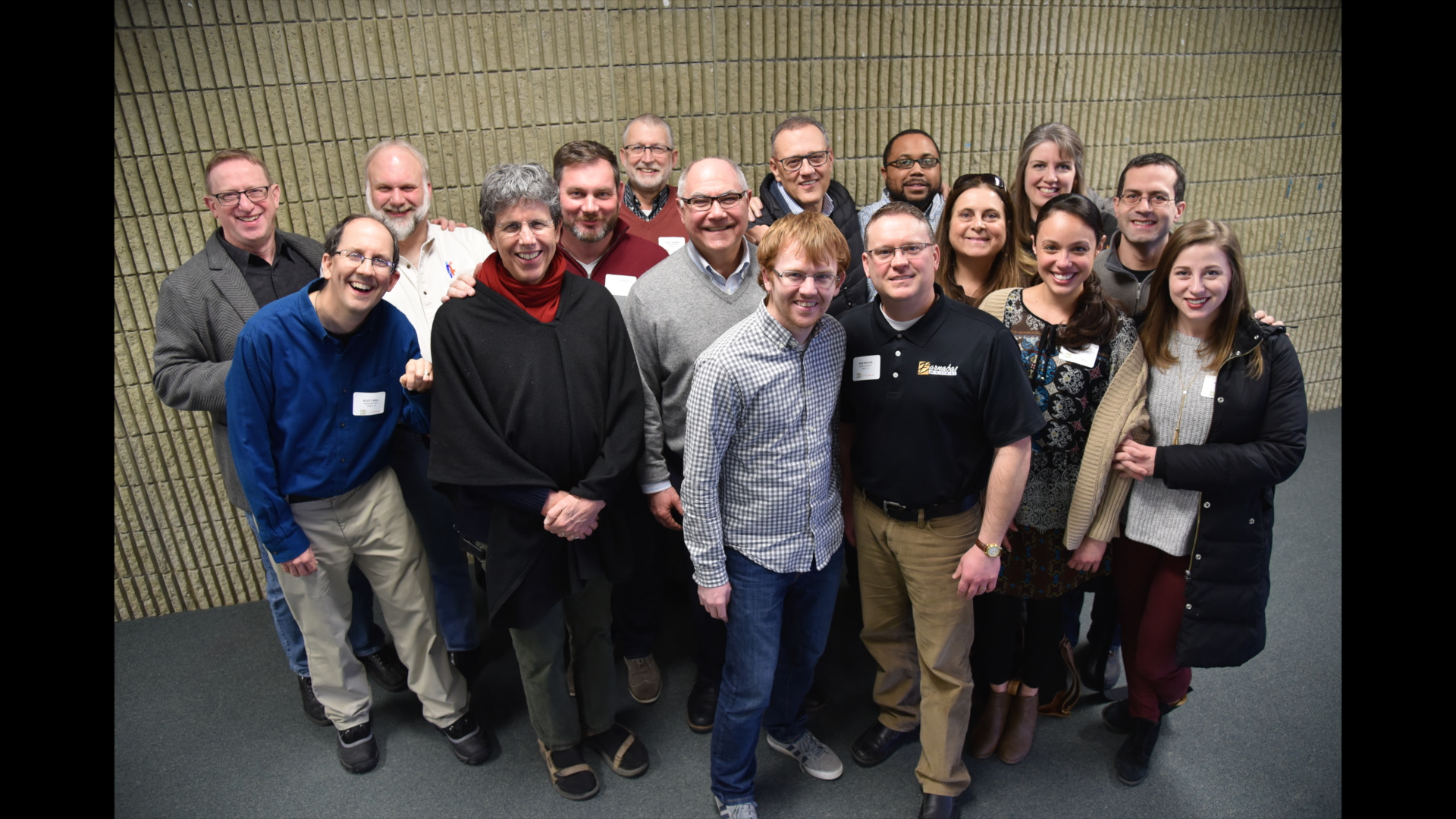
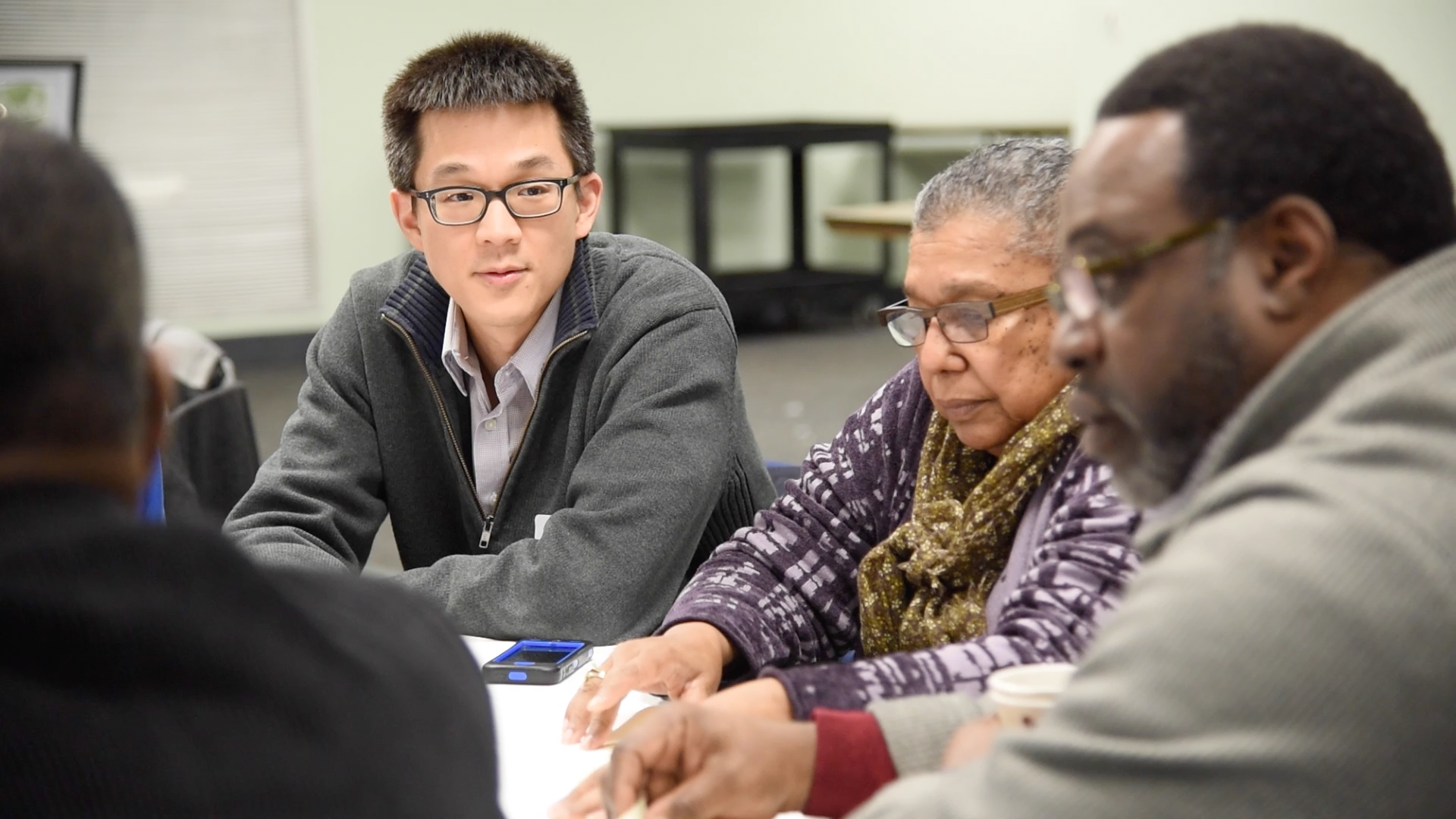



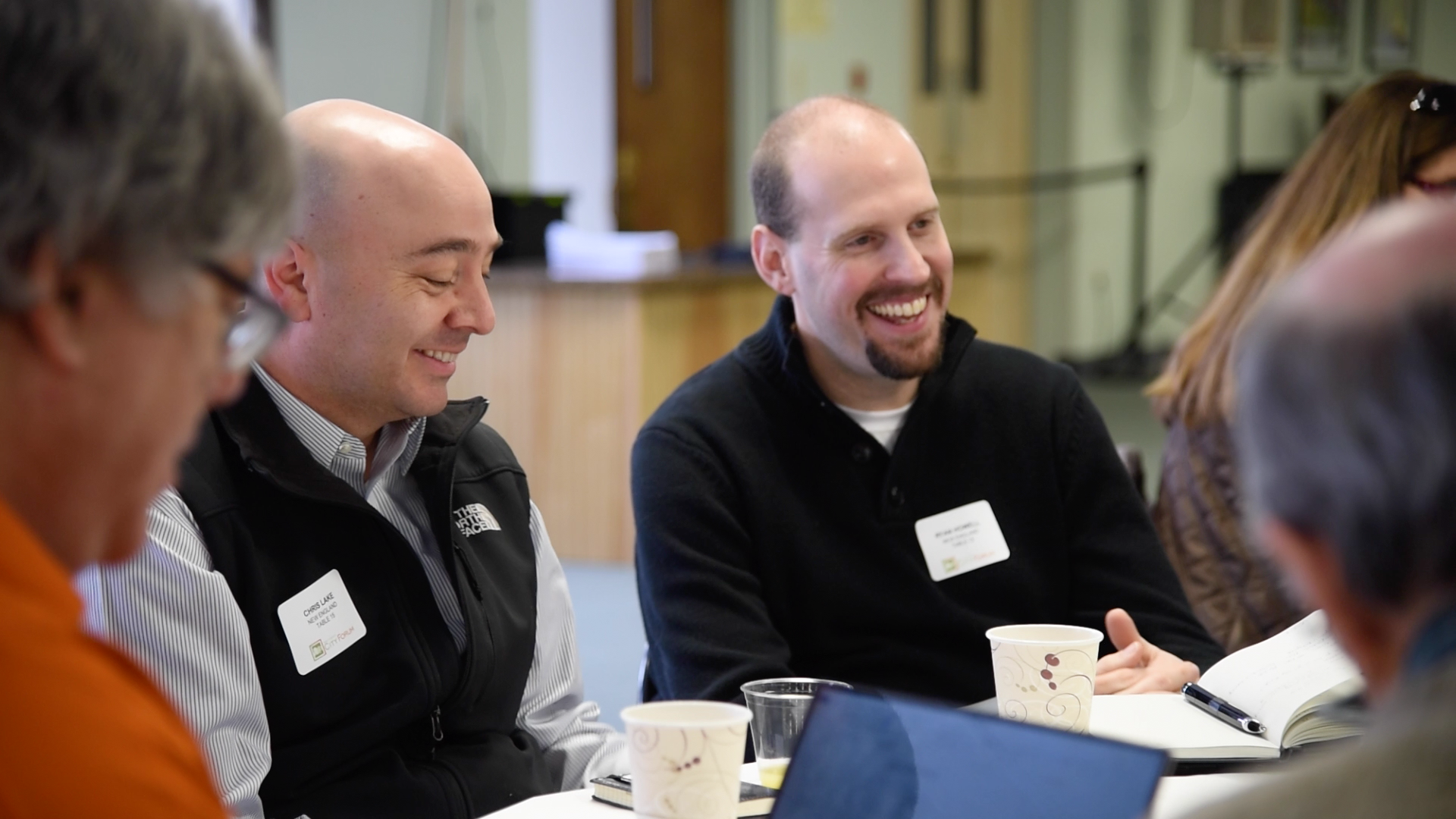






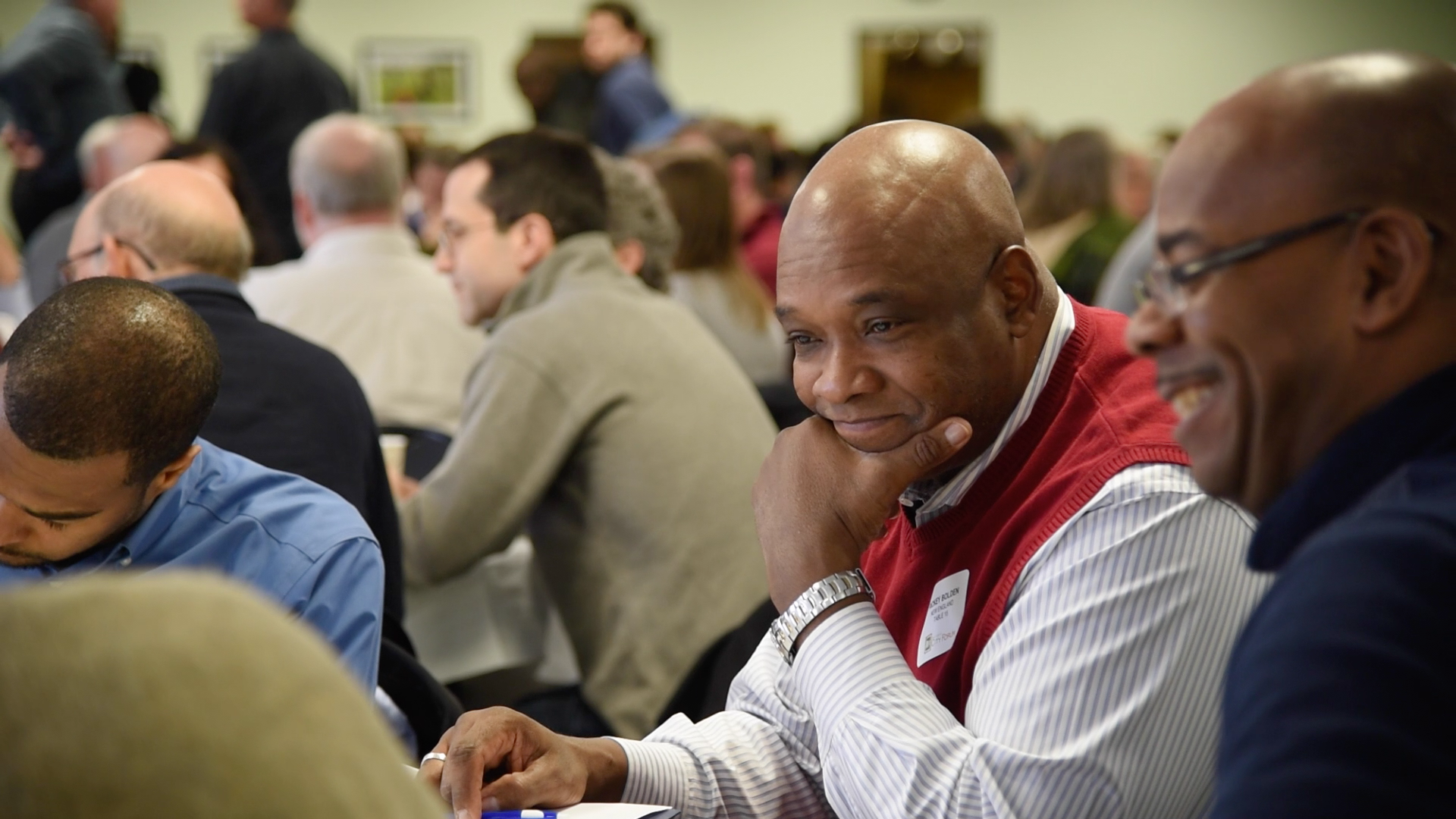

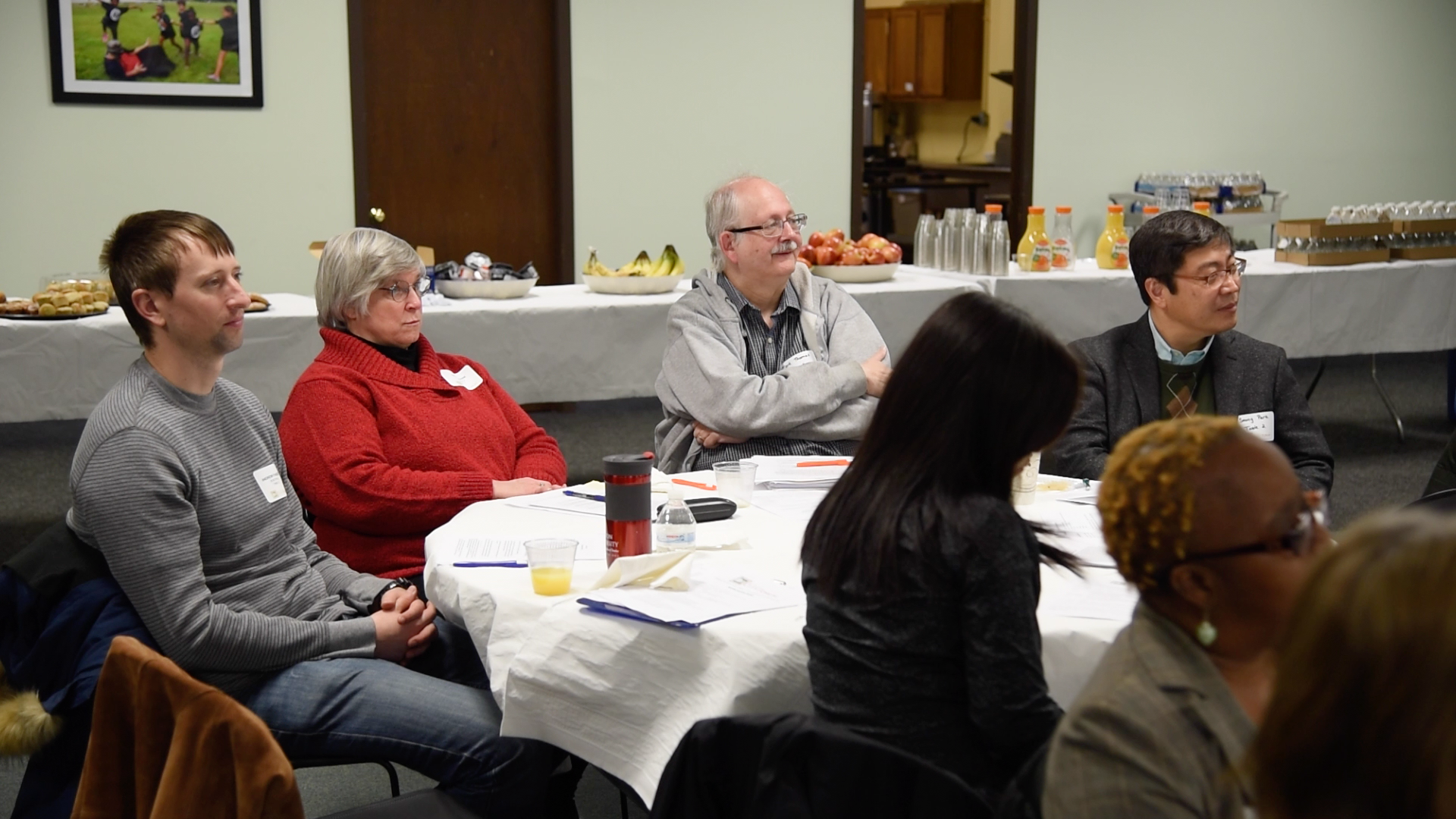






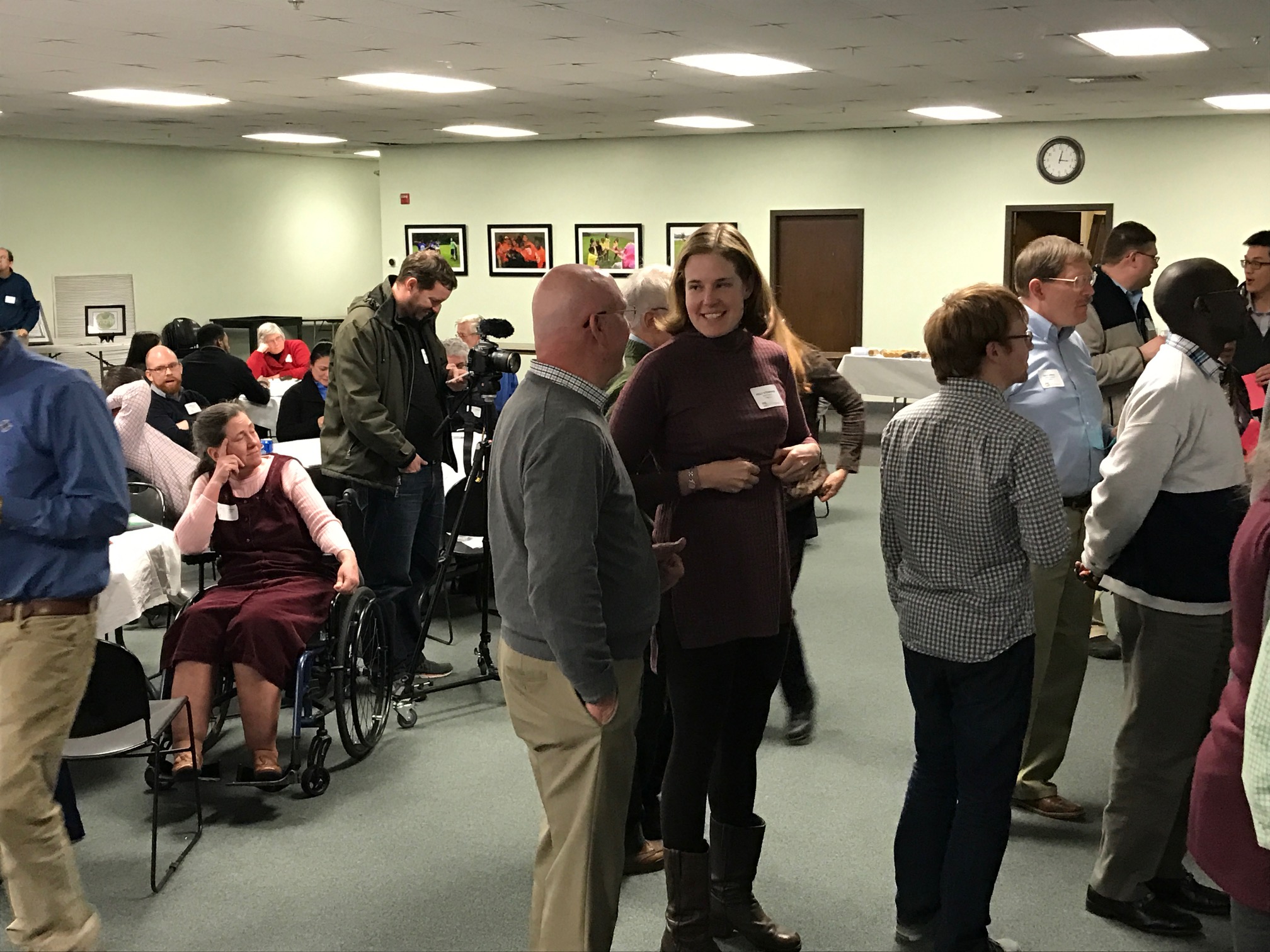



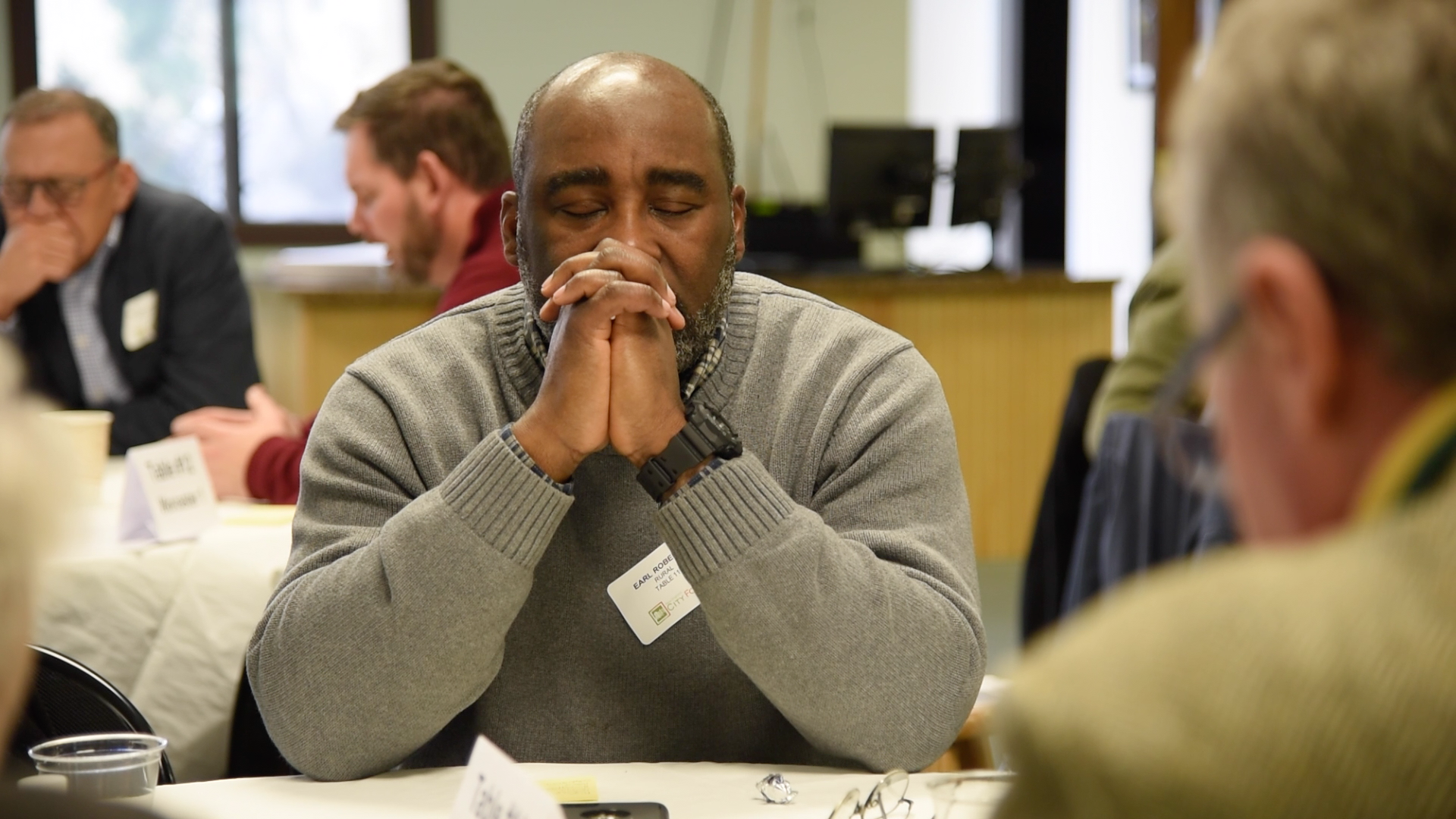



















What is Living System Ministry? Doug Hall sets out the core ideas of this discipline of Christian practice where we learn to discern the living social systems around us and align our actions to what really creates lasting change.